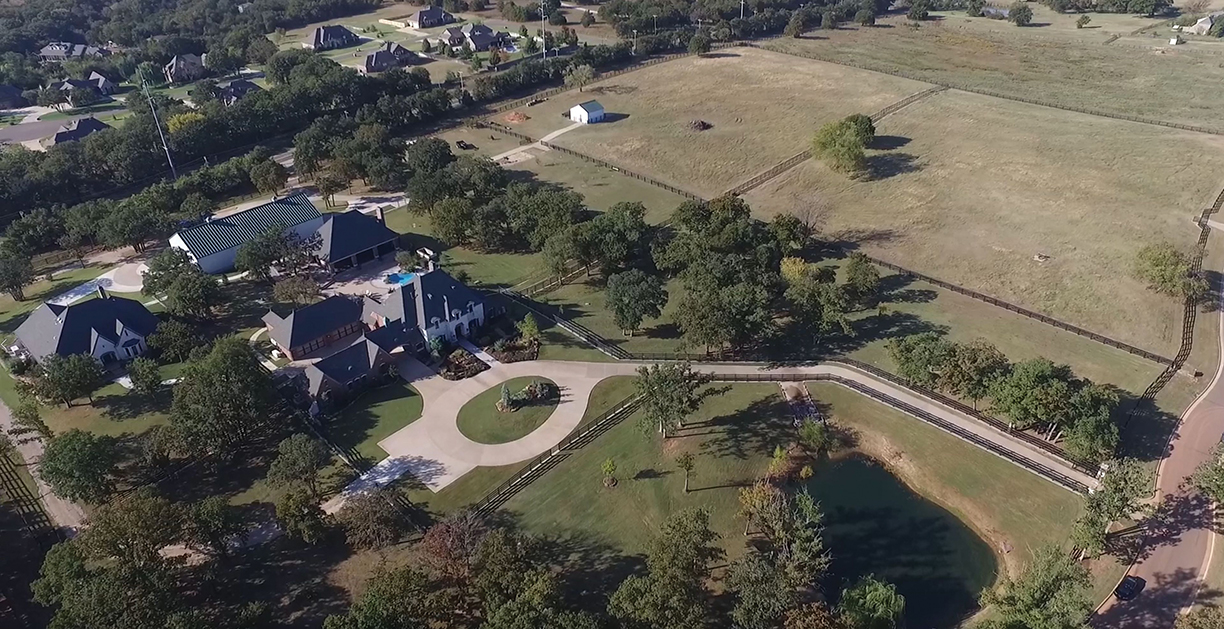
Edmond, Oklahoma
Majestic family estate on 18 acres in the gated equestrian addition of Qua Vadis in the Edmond city limits. The estate has 11,000 square feet of living and is minutes from downtown OKC. The 6,200-square-foot main home features 5 bedrooms, 5.5 baths, 2 living and dining rooms, office, gym or second office, safe room, and in-ground shelter. The 2nd 2,697-square-foot home is perfect to accommodate guests or multi-generational family living with 3 bedrooms, 2 baths, and a bank vault shelter and safe room. The 2,400-square-foot lodge style cabana overlooks the pool, courtyard and fire pit. A 5,000-square-foot barn with 16-foot doors and 4 horse stalls can accommodate an RV. Oak trees, riding trails, stocked pond, loafing shed, water wells, and generators. $3,600,000
For more about this property, visit www.11200sorentinodr.com
For more information, contact:
Debra Wilson — Broker Associate, GRI, CRS, ABR
Metro First Realty
405.919.6978
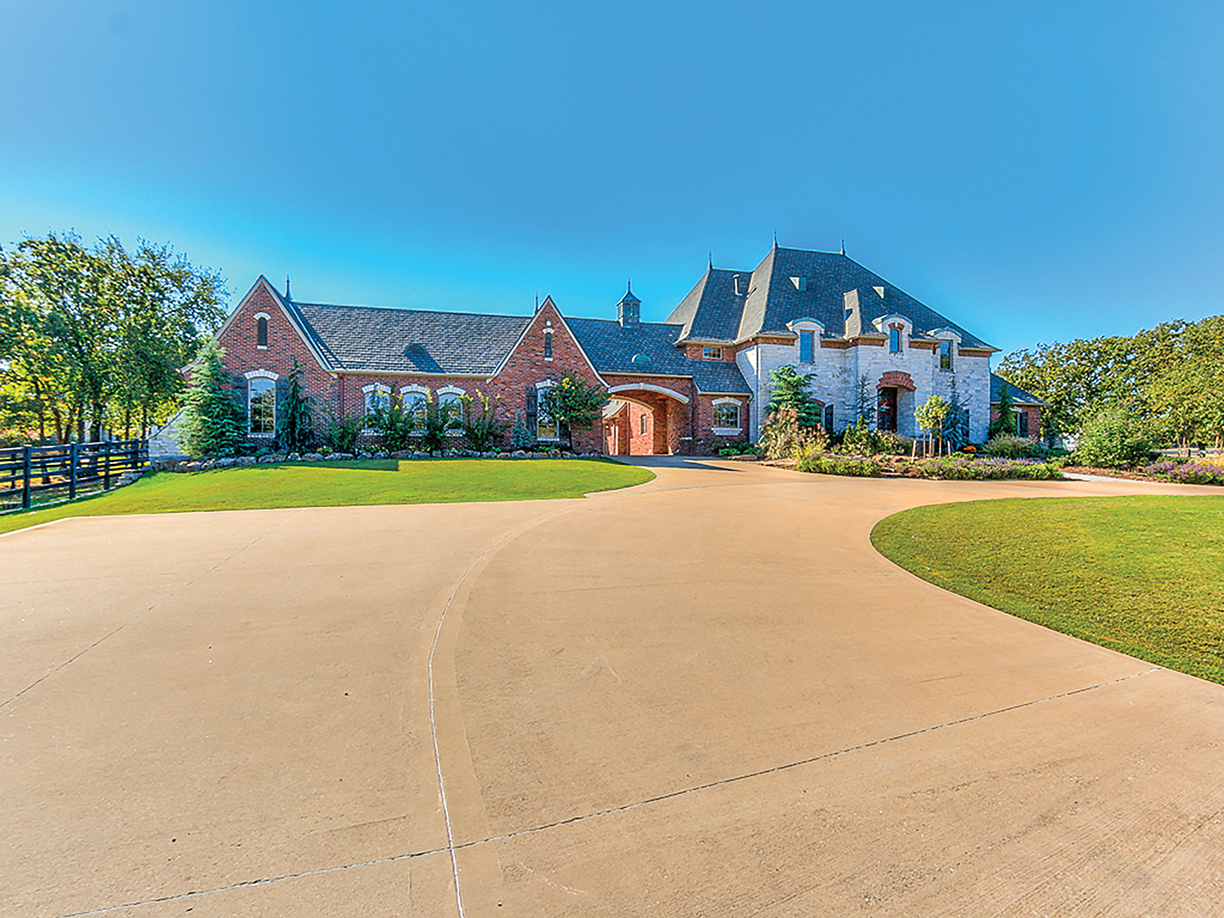
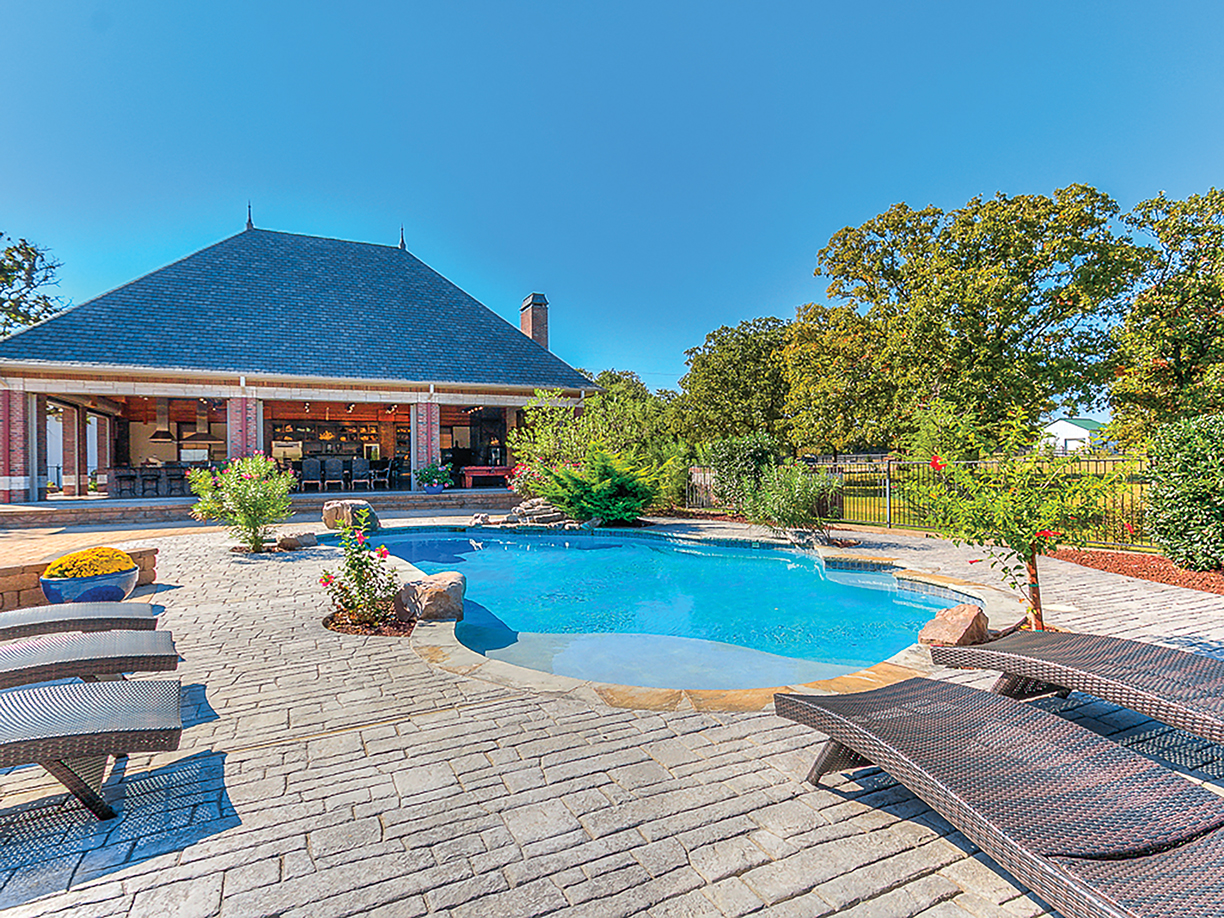

This gorgeous great room is the gathering space of the home with the floating fireplace as its centerpiece. Featuring art from the Chelsea Art Group in New York City, the great room is warm and inviting and flows seamlessly into the kitchen and breakfast area.
Designer ~ Anna Maria Mannarino
Mannarino Designs, Inc.
866.574.3326
Holmdel, NJ
mannarinodesigns@comcast.net
mannarinodesigns.com
Instagram ~ @mannarinoannamaria
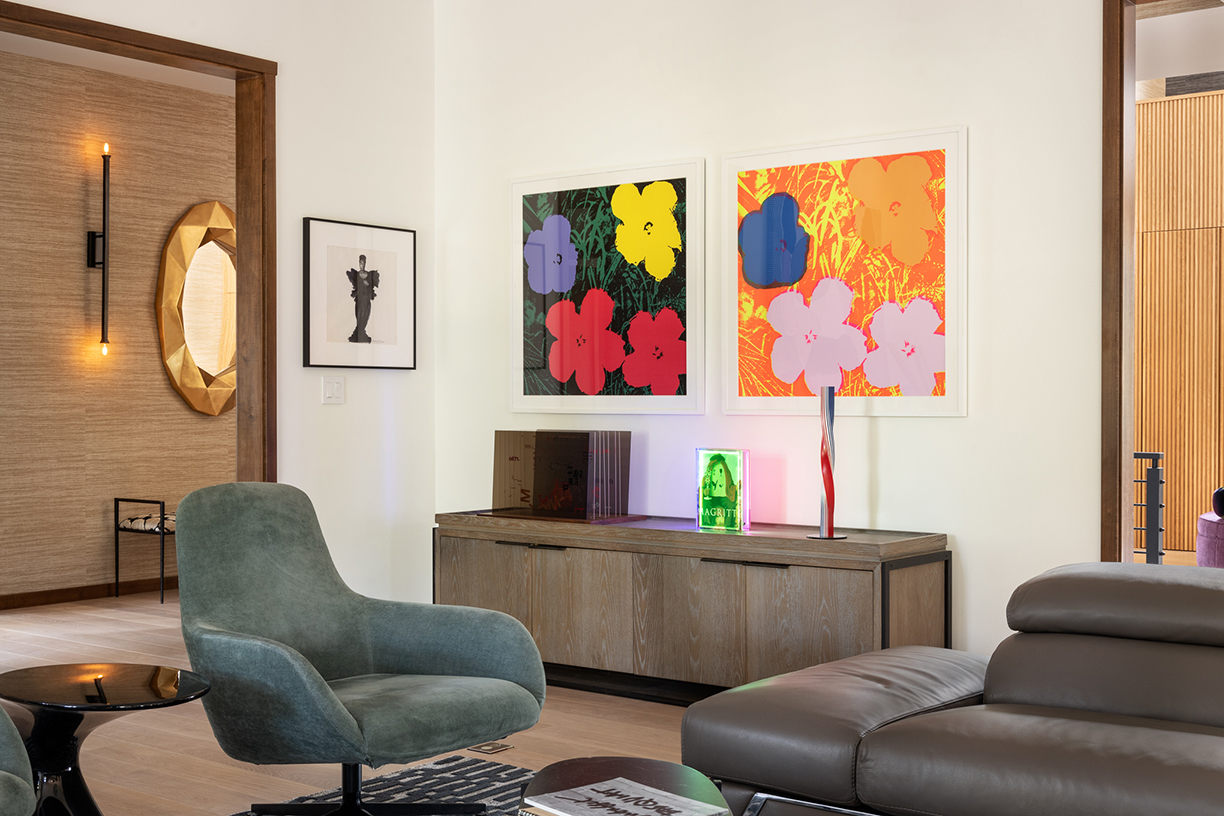
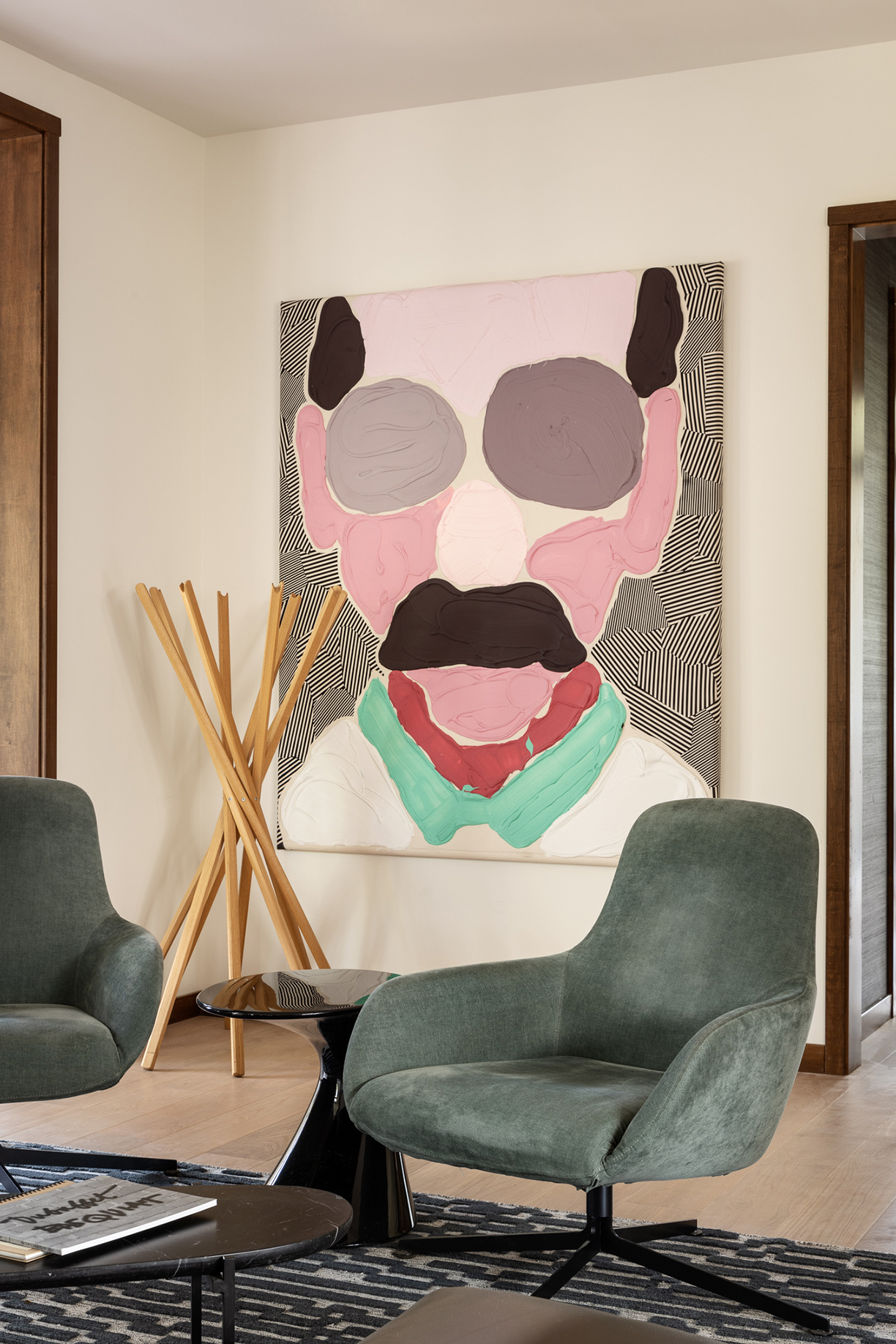
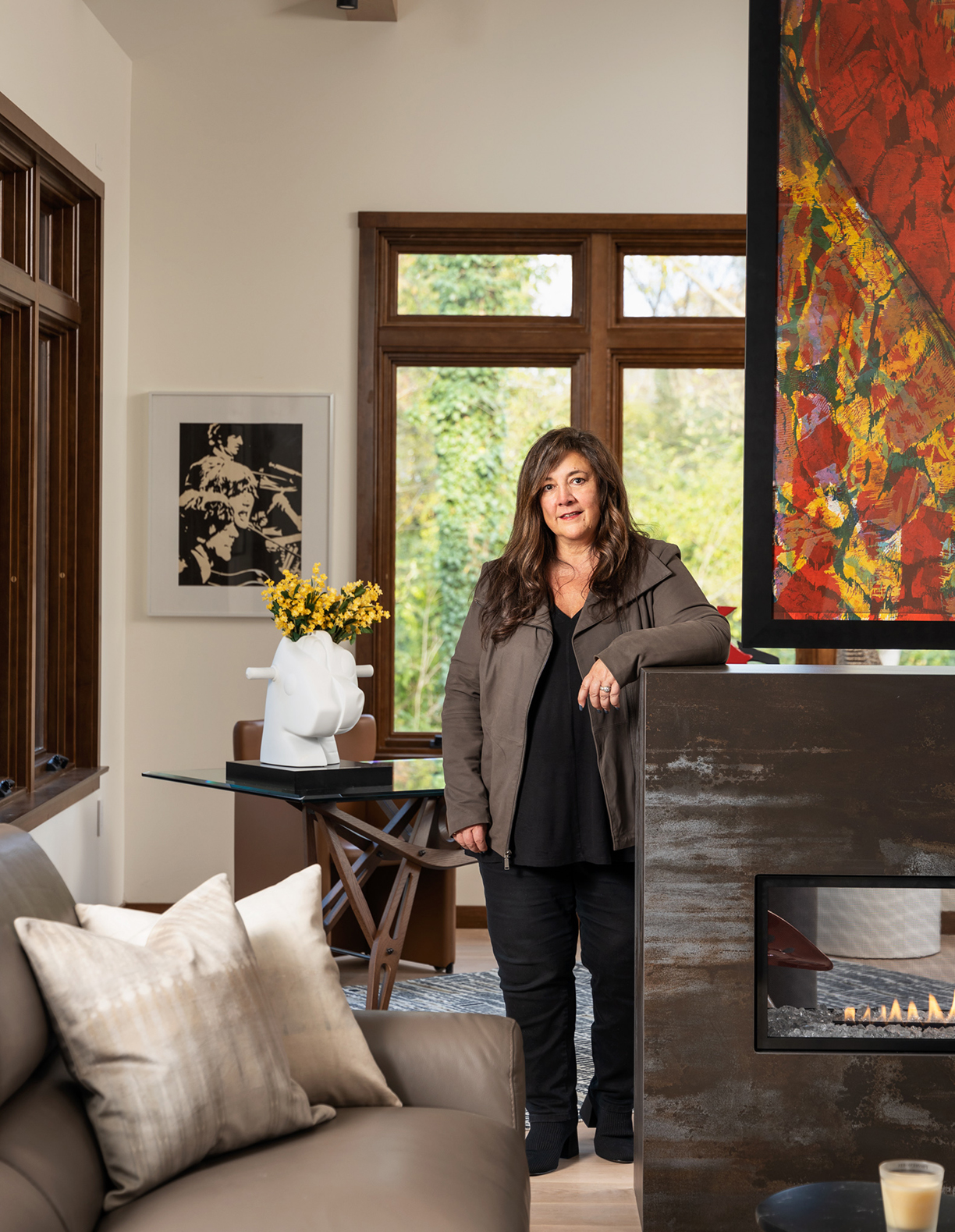
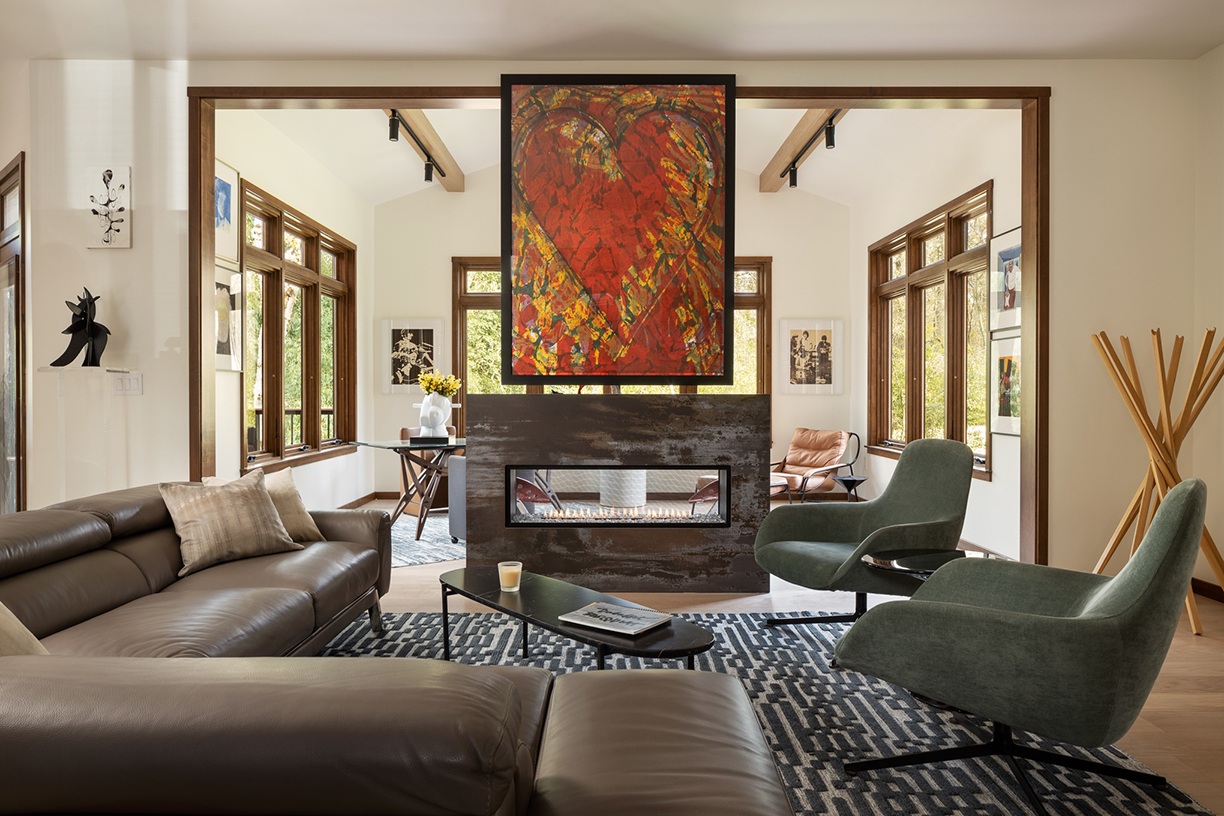
Photography by Mike Von Tassell Photography
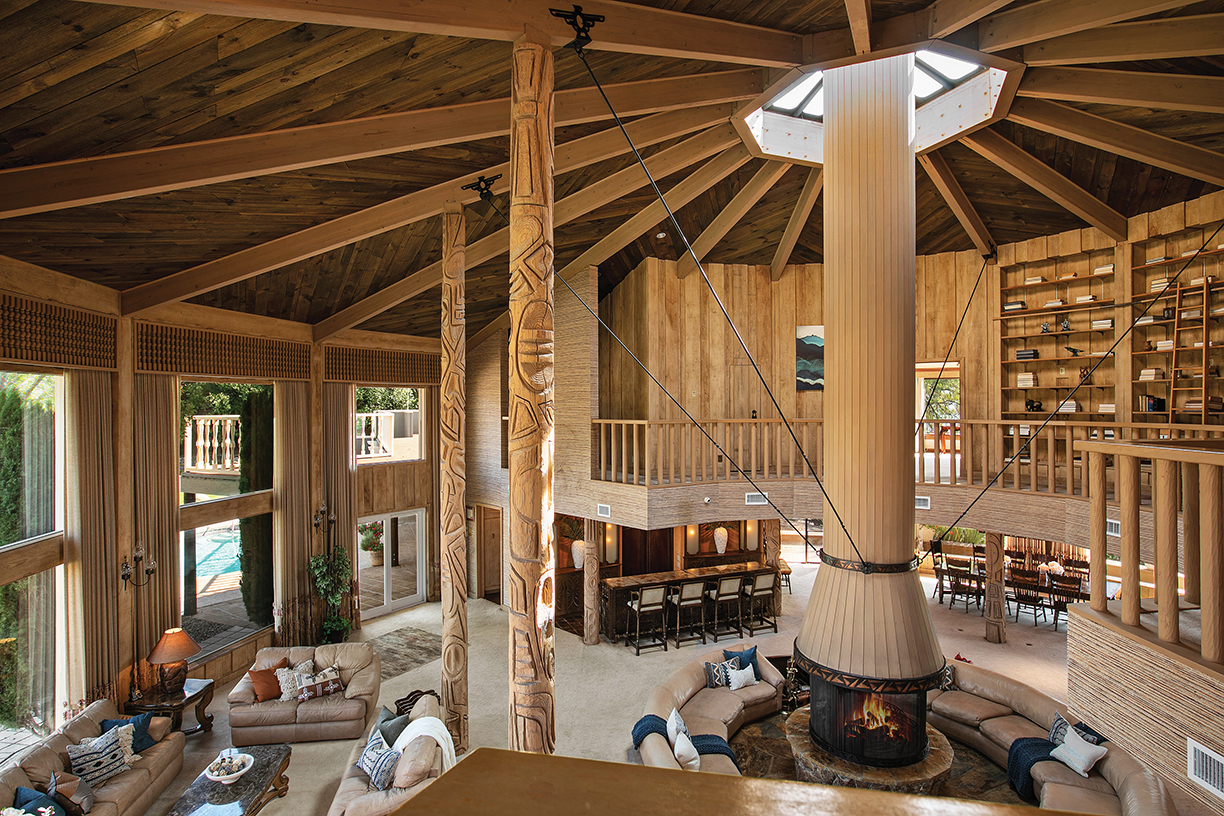
Once owned by McDonald’s founder Ray Kroc, this ranch features a pallette of stunningly beautiful pastures, valleys, hills and vistas, perfect for a family compound, company retreat, or working ranch. Comprised of 6 parcels totaling 554 acres, and multiple residences, barns, gathering spaces, and recreational opportunities.
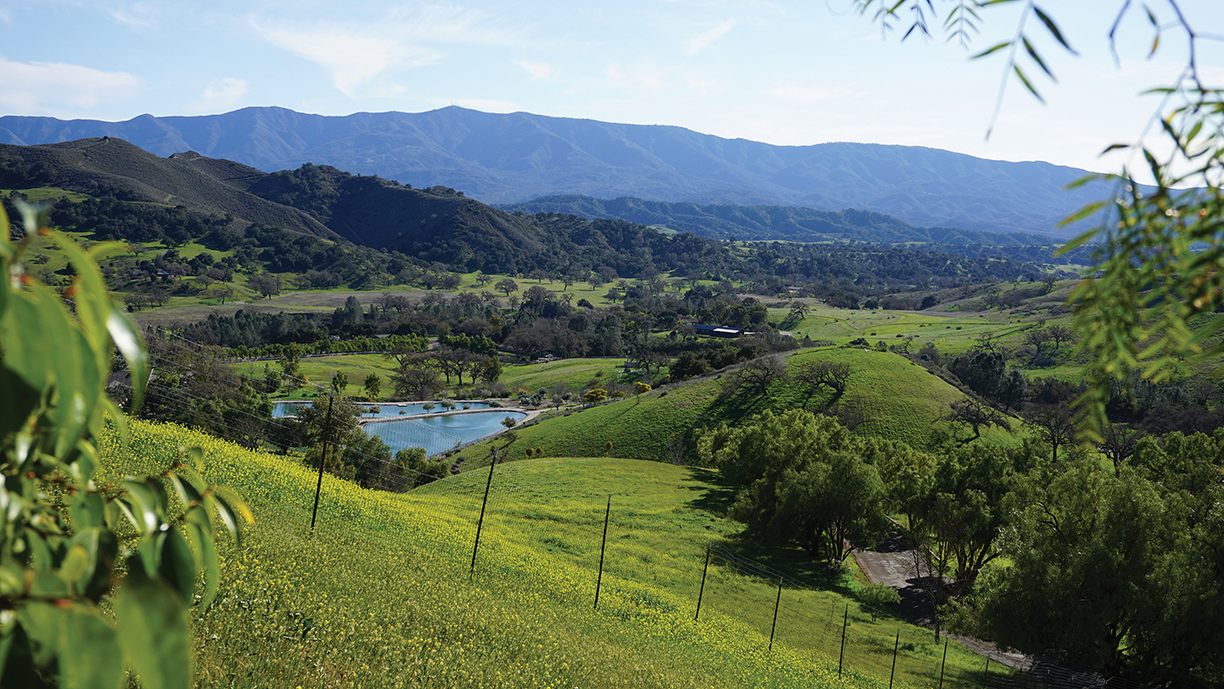
The property includes a 17,000-square-foot lodge with a 3,000-square-foot grand room, 14 bedroom suites, commercial kitchen, and dining room for approximately 100 people with overnight accommodations on the ranch for approximately 100 guests.
The Founder’s Building serves as a library, with 2 bedroom suites and ranch offices below. Other structures include a large storage barn, McDonald’s test kitchen, complete gymnasium, 4 single-family residences, 2 bunk houses with multiple en suite bedrooms, barns, paddocks and numerous fenced corrals.
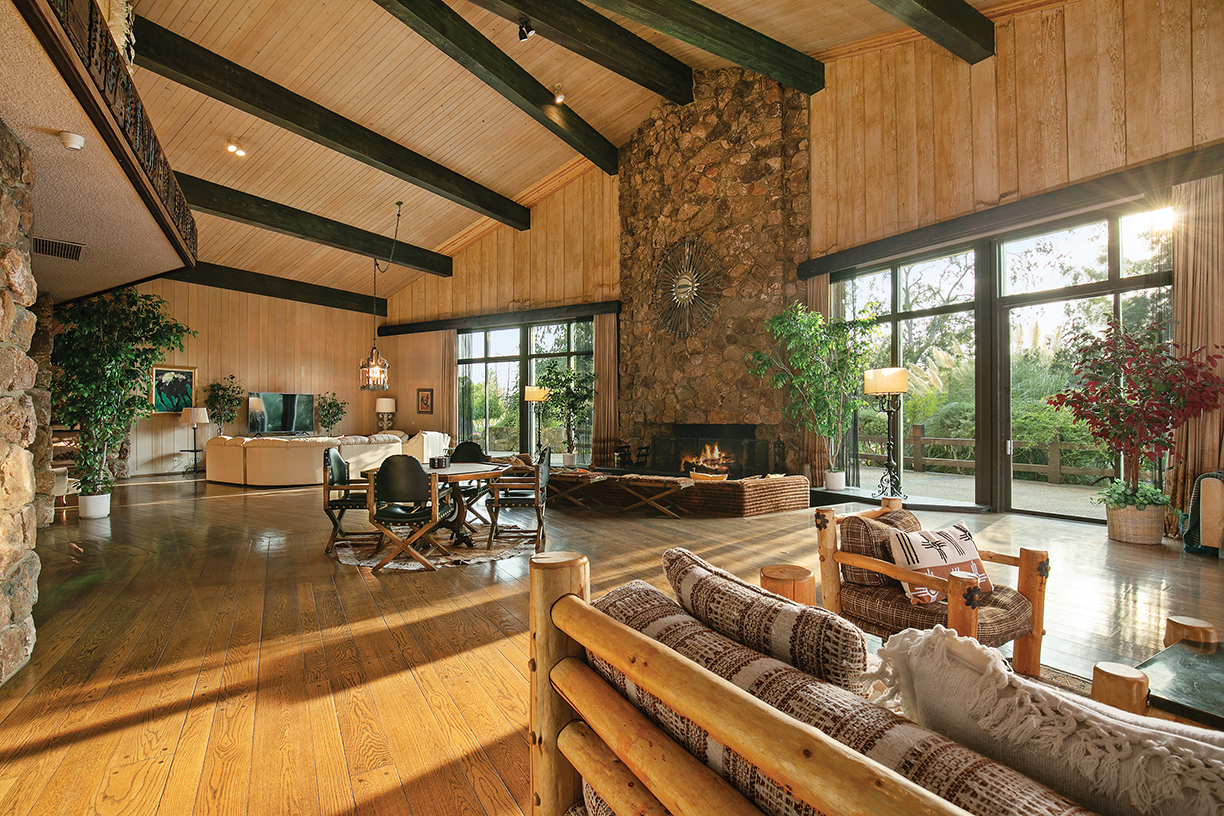
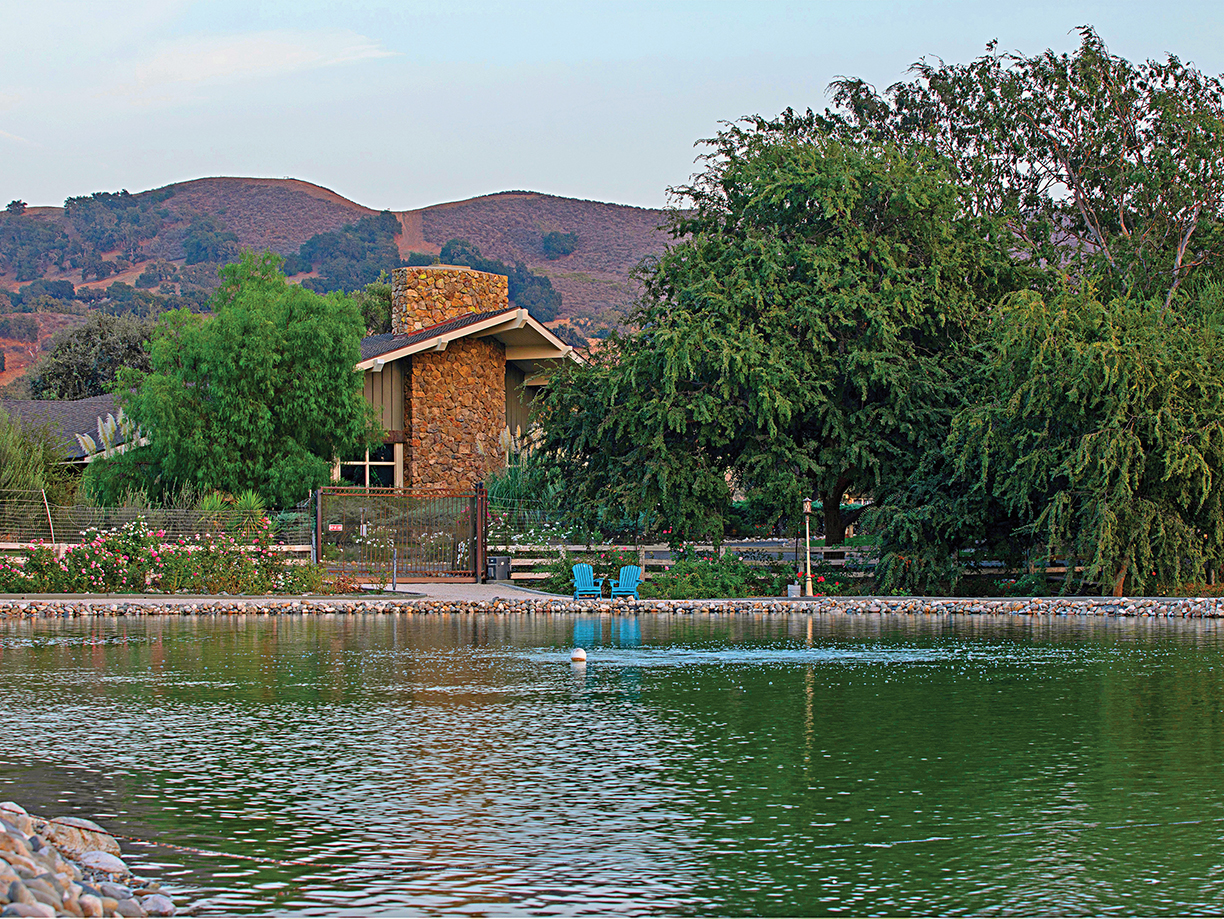
Priced at $29,000,000.
For more photos, information, and a property video click here.
For more information on this property, please be sure to contact:
Maurie McGuire, Scott Westlotorn & Maria Temmel of Coldwell Banker Realty.
Maurie@Montecitoland.com | Scott@MontecitoLand.com | Maria.Temmel@camoves.com
MM. 805.403.8816 | SW. 805.403.4313 | MT. 310.383.2337
CalDRE# 01875690 – # 01061042 – # 02023777
Photos courtesy of Maria Temmel.
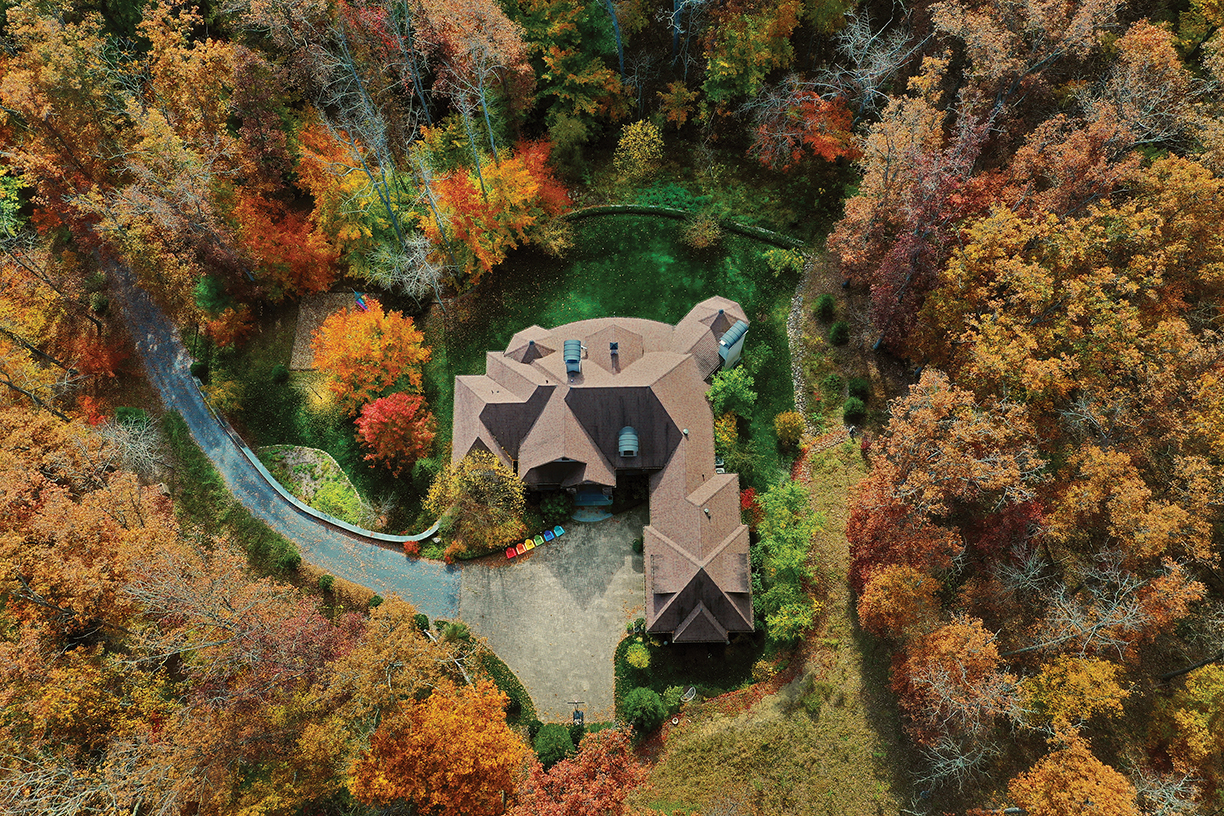
This exceptionally stylish and elegant home is in a private 6.8-acre wooded setting in Lewisburg, West Virginia, just minutes from downtown and the world-famous Greenbrier Resort.
“It has great quality and character, while maintaining the ease of a comfortable lifestyle,” says listing agent Paul Grist of Grist Real Estate Associates Inc. who is listing the property with Donna Stoner for $1.625 million
Its many noteworthy features include a living room with a 23-foot cathedral ceiling, four gas fireplaces, a large gourmet kitchen with an adjacent screened dining porch, five bedroom suites, a wine cellar, a dry sauna, and three-bay garage.
“The lower level family room features a stone fireplace and large windows, perfect for viewing the private wooded surrounding,” says Grist.
For more information, contact:
Grist Real Estate Associates, Inc.
Paul Grist, Broker — 304.661.6543
Donna Stoner, GRI, Agent — 304.646.6454
695 Jefferson Street, South Lewisburg, WV 24901
304.645.5000
www.GristRealEstate.com/LUX
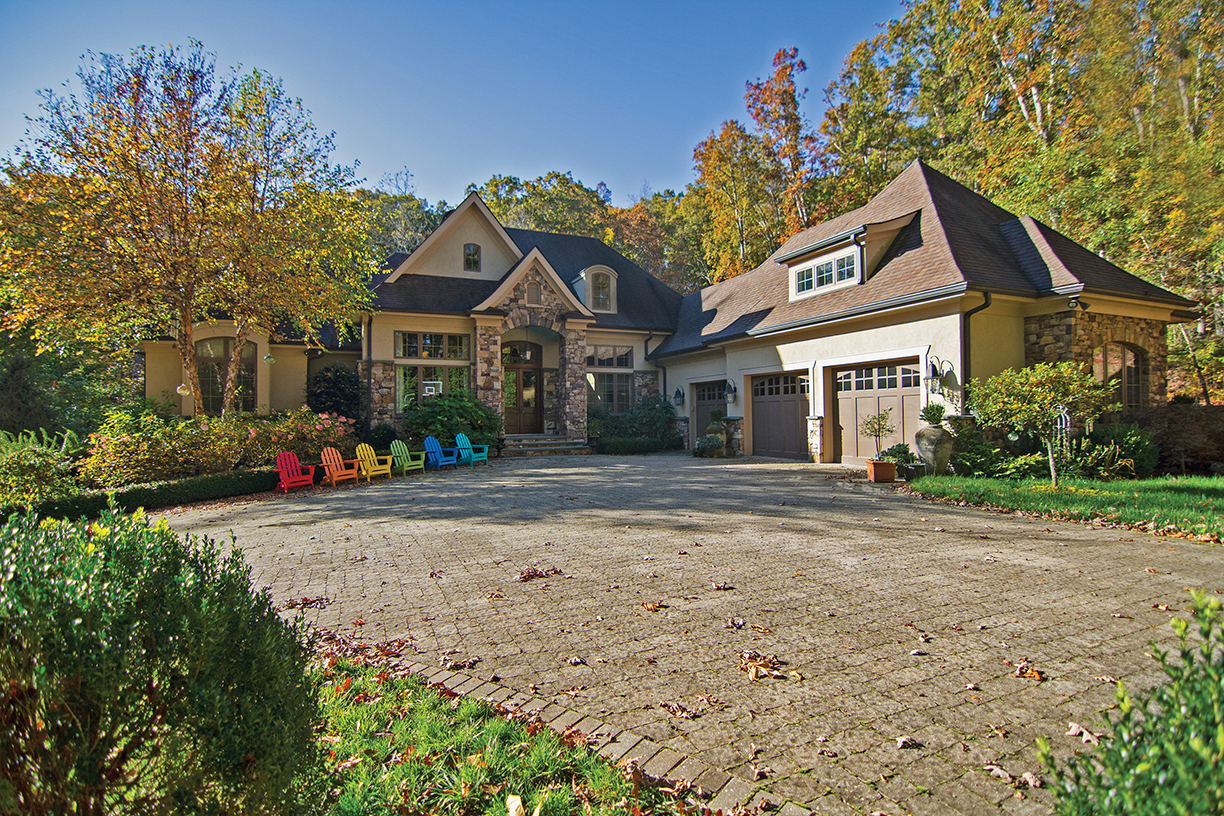
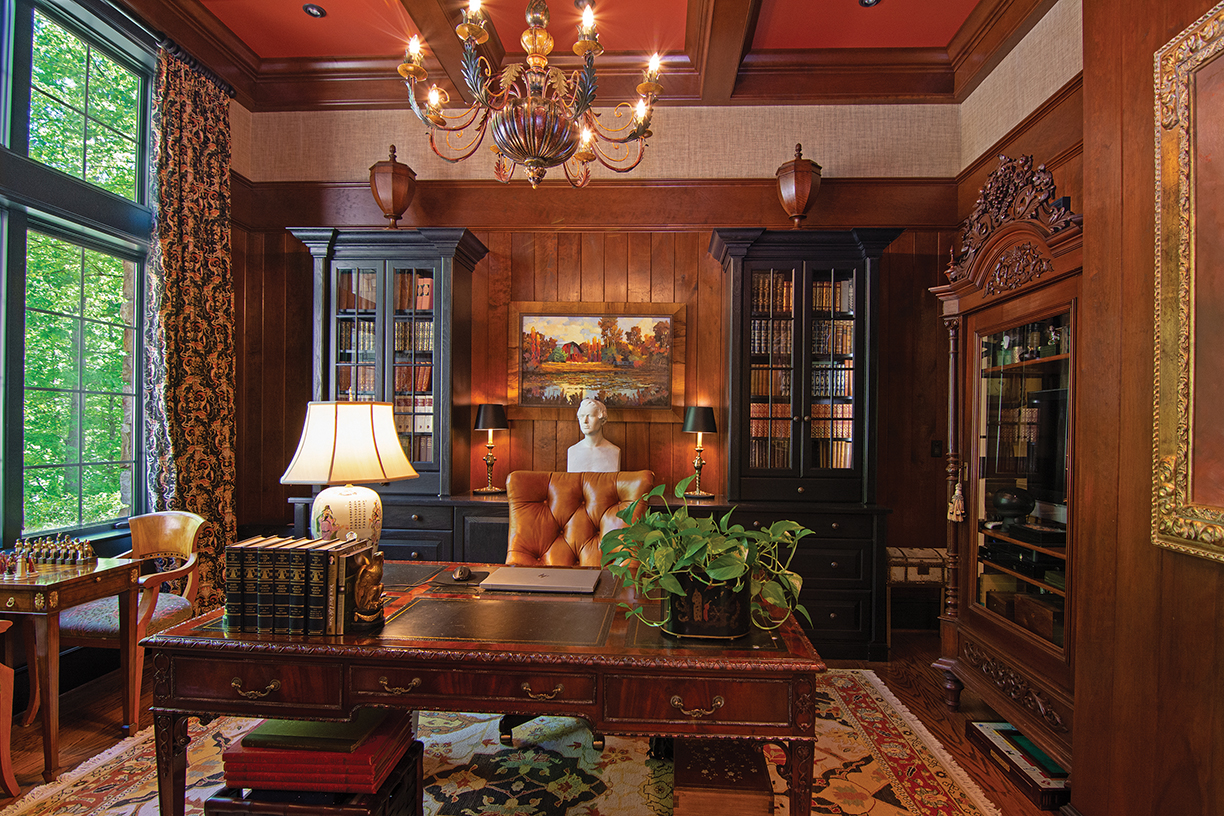
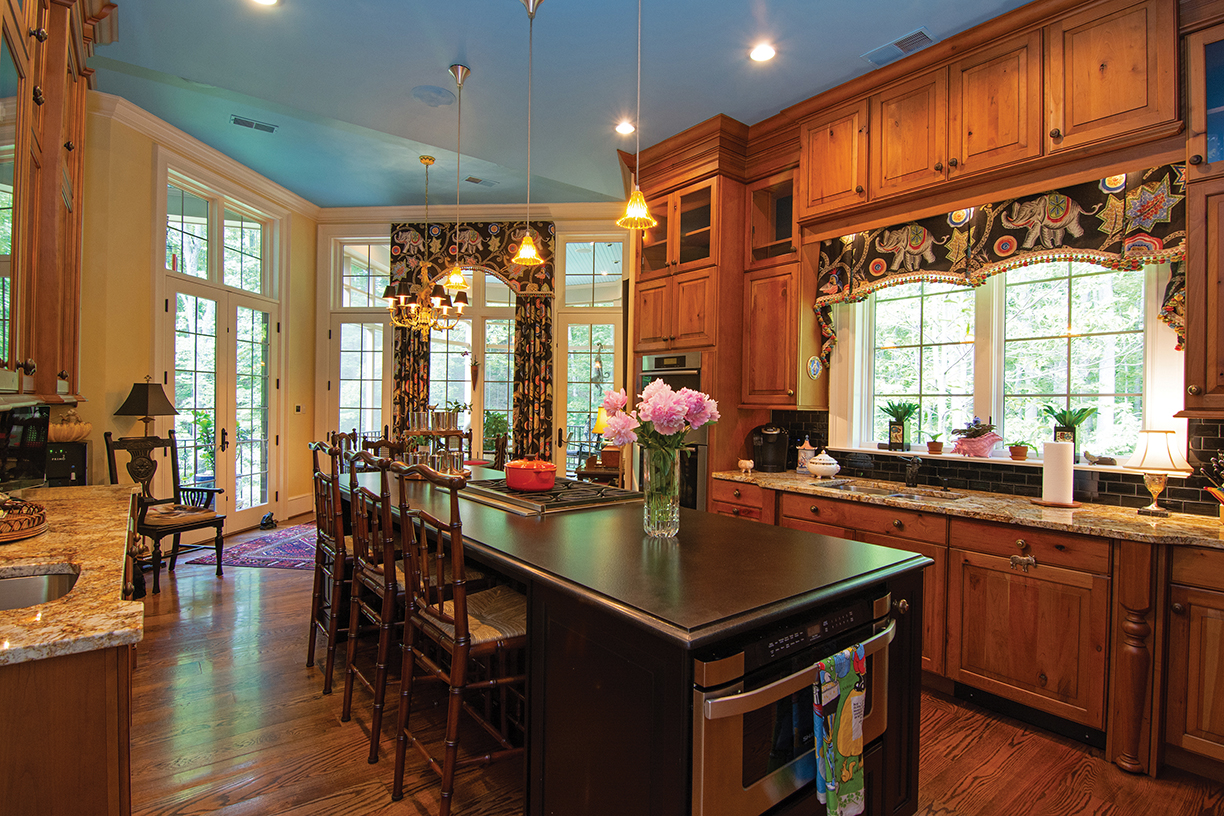
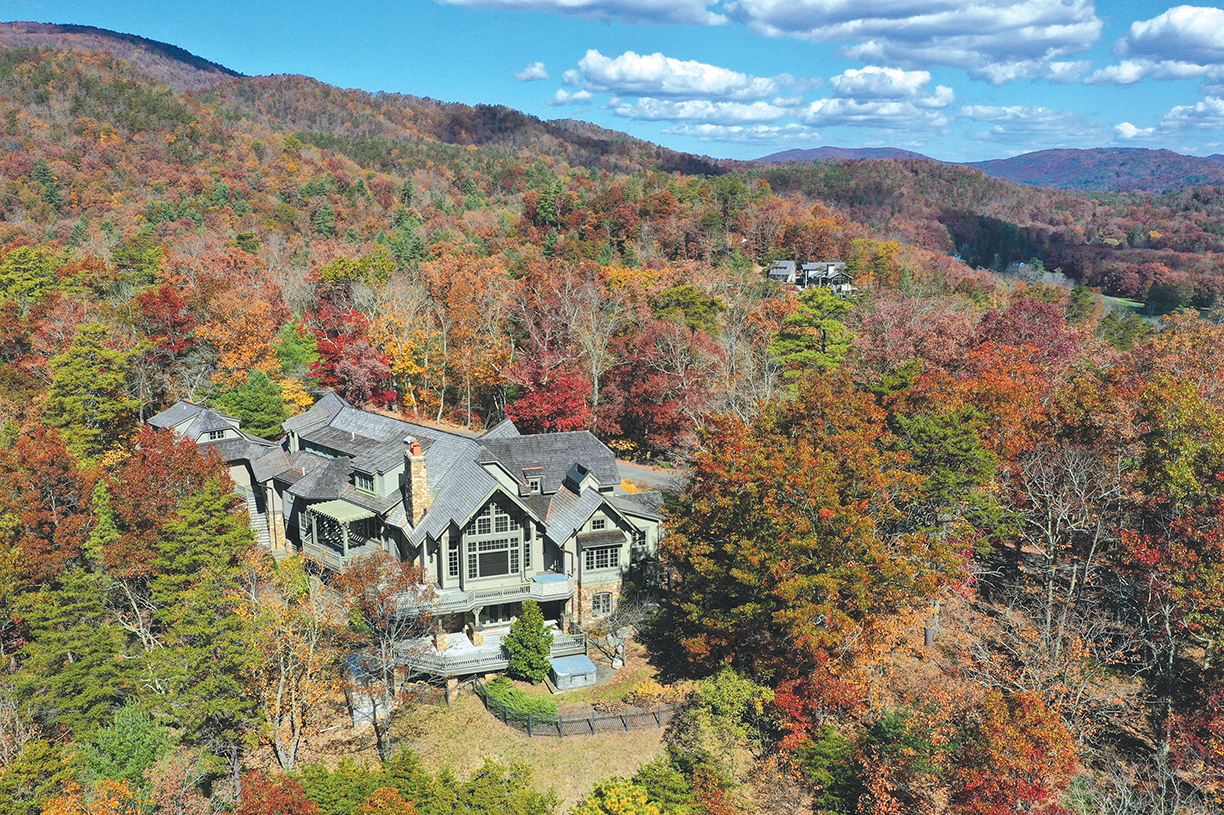
Showcasing a greenhouse, waterfall and koi pond, this approximately 22-acre mountain retreat in the Greenbrier Sporting Club at White Sulphur Springs, West Virginia, is perfect for someone who enjoys nature.
“The exterior waterfall in the front of the house makes it sound like a babbling brook in the middle of nature,” says listing agent Paul Grist of Grist Real Estate Associates Inc. who is listing the property with Donna Stoner.
The home features 10,028± square feet of living space, eight bedrooms, nine full and three half baths, four fireplaces, and two hot tubs.
“The living room, dining room, and kitchen, with serene views of the eastern mountains, gives one a feeling of ‘sitting on top of the world’ with total privacy,” says Grist.
The estate, which is listed for $2.95 million, also includes a carriage house.
Adjacent to the world-famous Greenbrier Resort, it is also conveniently located four hours from Washington D.C. and five hours from Pittsburgh, with the nearby airport offering direct flights.
For more information, contact:
Grist Real Estate Associates, Inc.
Paul Grist, Broker — 304.661.6543
Donna Stoner, GRI, Agent — 304.646.6454
695 Jefferson Street, South Lewisburg, WV 24901
304.645.5000
www.GristRealEstate.com/LUX
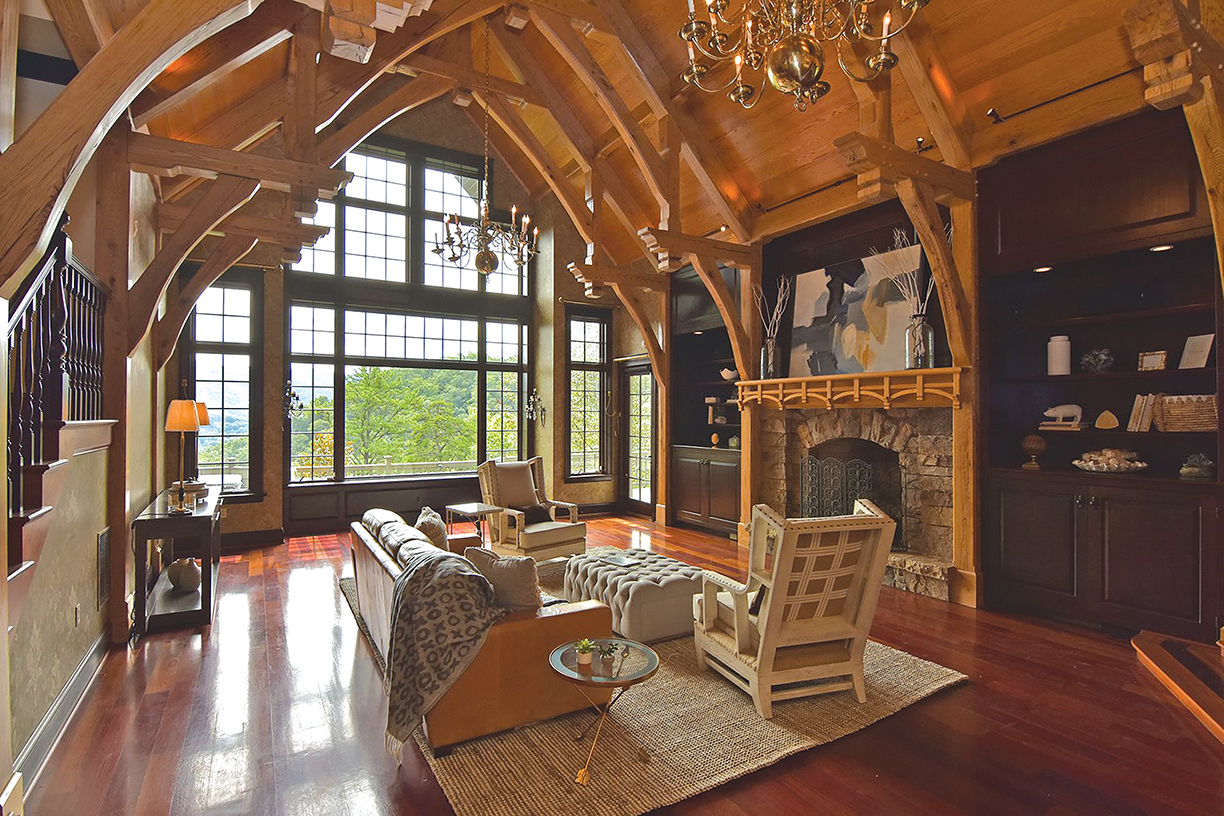
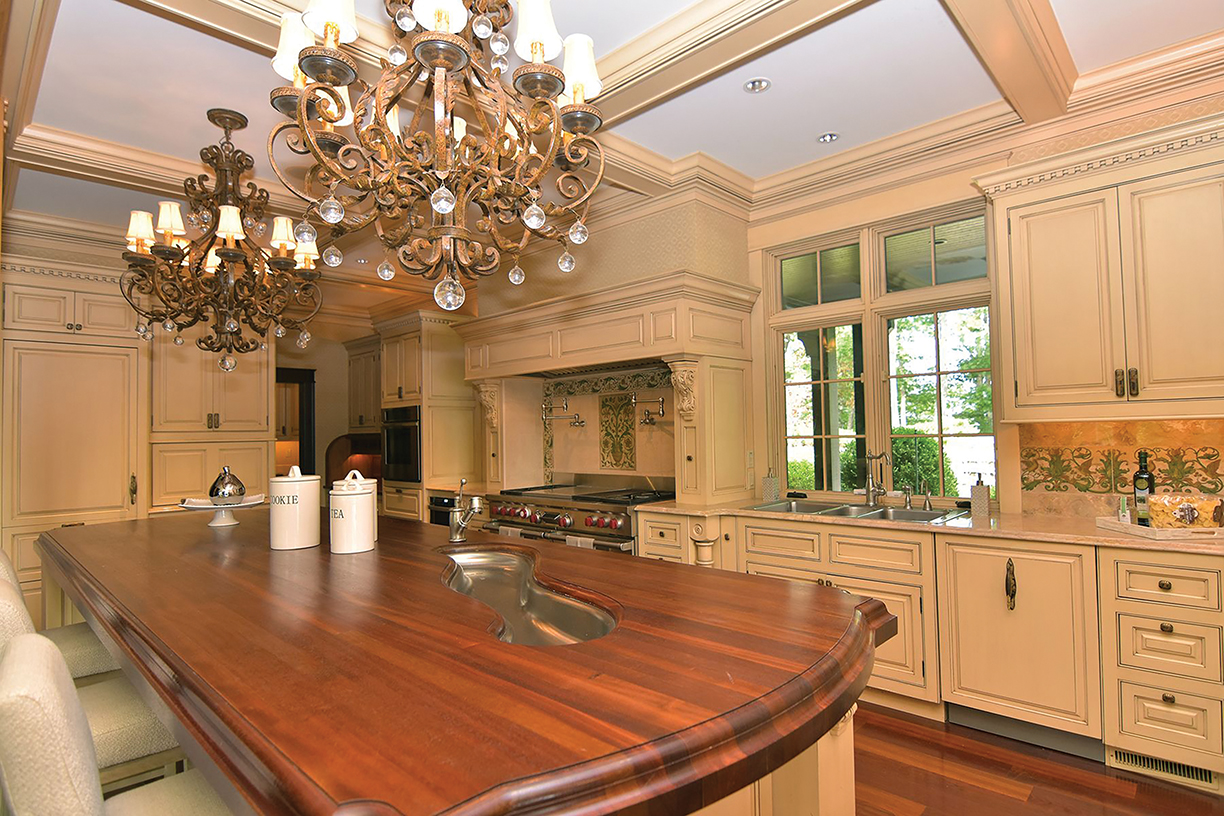
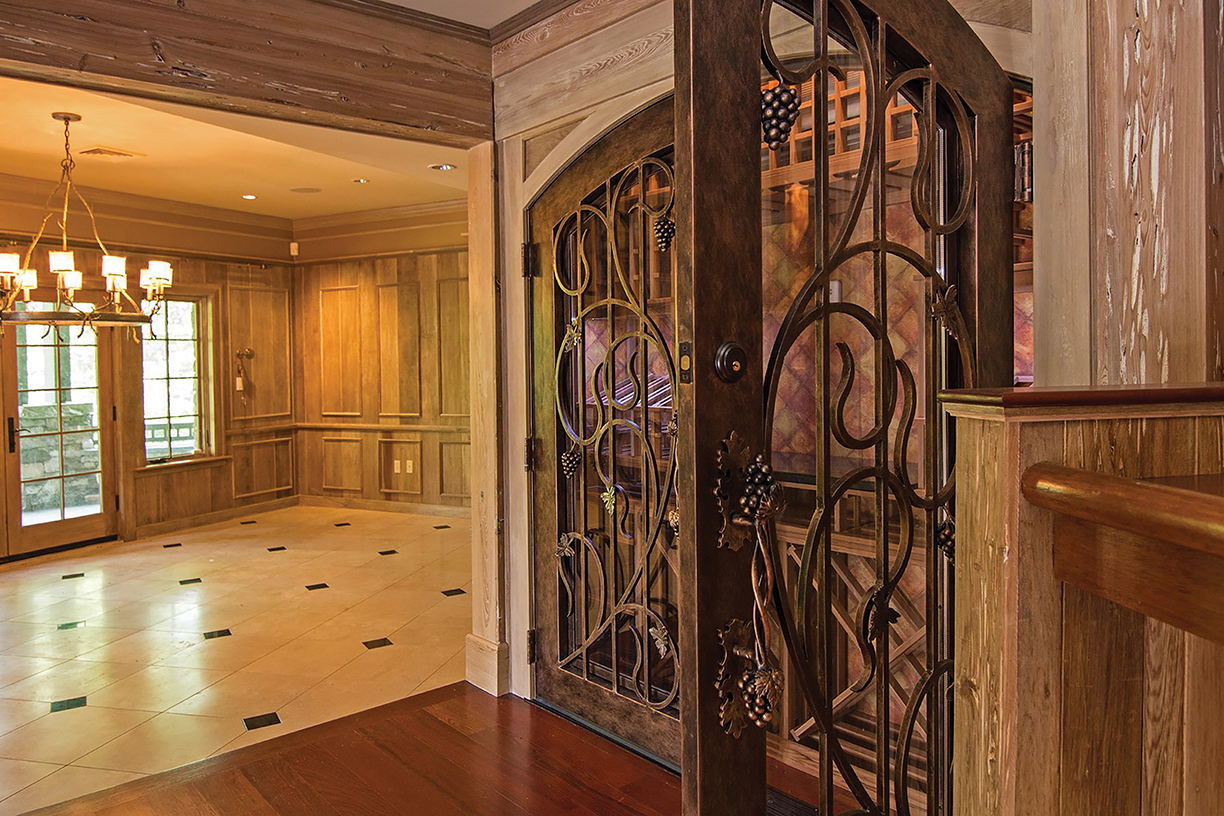
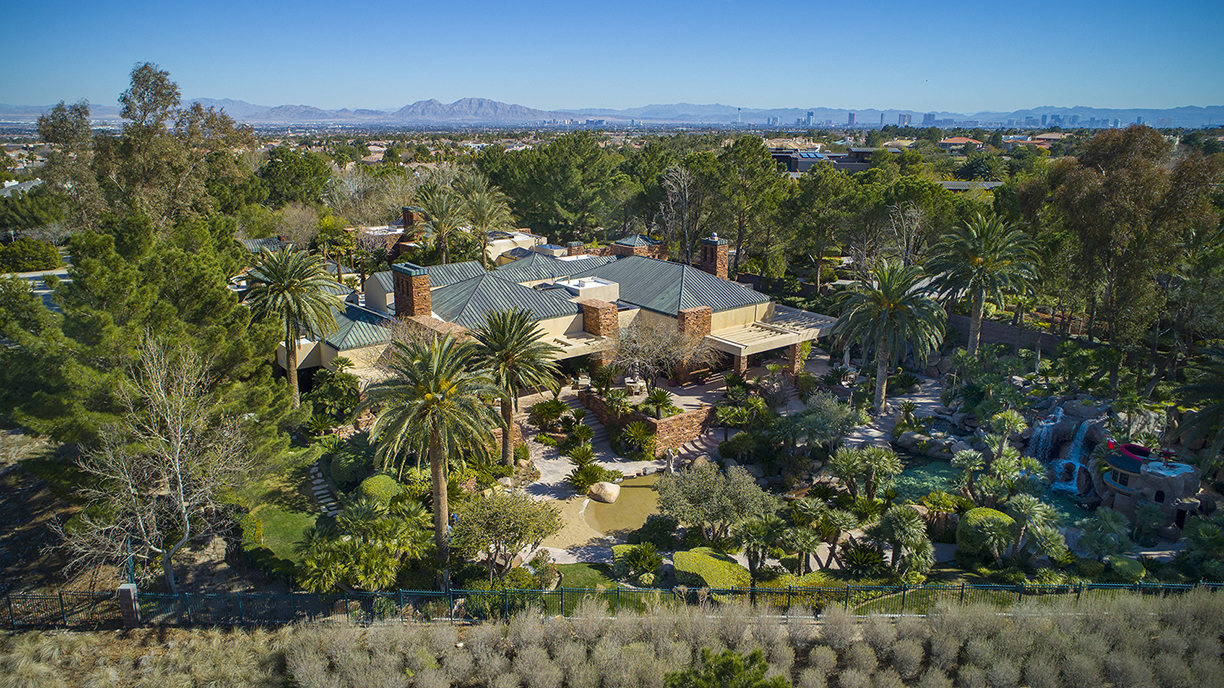
1701 Enclave Court
Las Vegas, Nevada 89134
Inspired by Frank Lloyd Wright’s Falling Water, this legacy property located in the prestigious Enclave of Summerlin is perfect for entertaining guests and family. Comprised of over 2,200 tons of ledge stone, this 13,000-plus-square-foot home sits on 2 acres of the private TPC course. This home’s amazing gardens and waterfalls run throughout the property, and not only serve as the centerpiece of this palatial home but provide a constant reminder of the true uniqueness of this home in the desert. Impressive vaulted-box, exposed-beam ceilings with recessed lighting adorn much of the home. For entertaining guests and family, this home boasts a great room, family room, formal dining room, wet bar, and wine cellar/home theater. This Las Vegas home offers both character and significance unmatched in the valley.
For more information, contact:
Don Kuhl
Principal – KUHL Group
Synergy | Sotheby’s International Realty
C: 702.324.2121 O: 702.360.1414

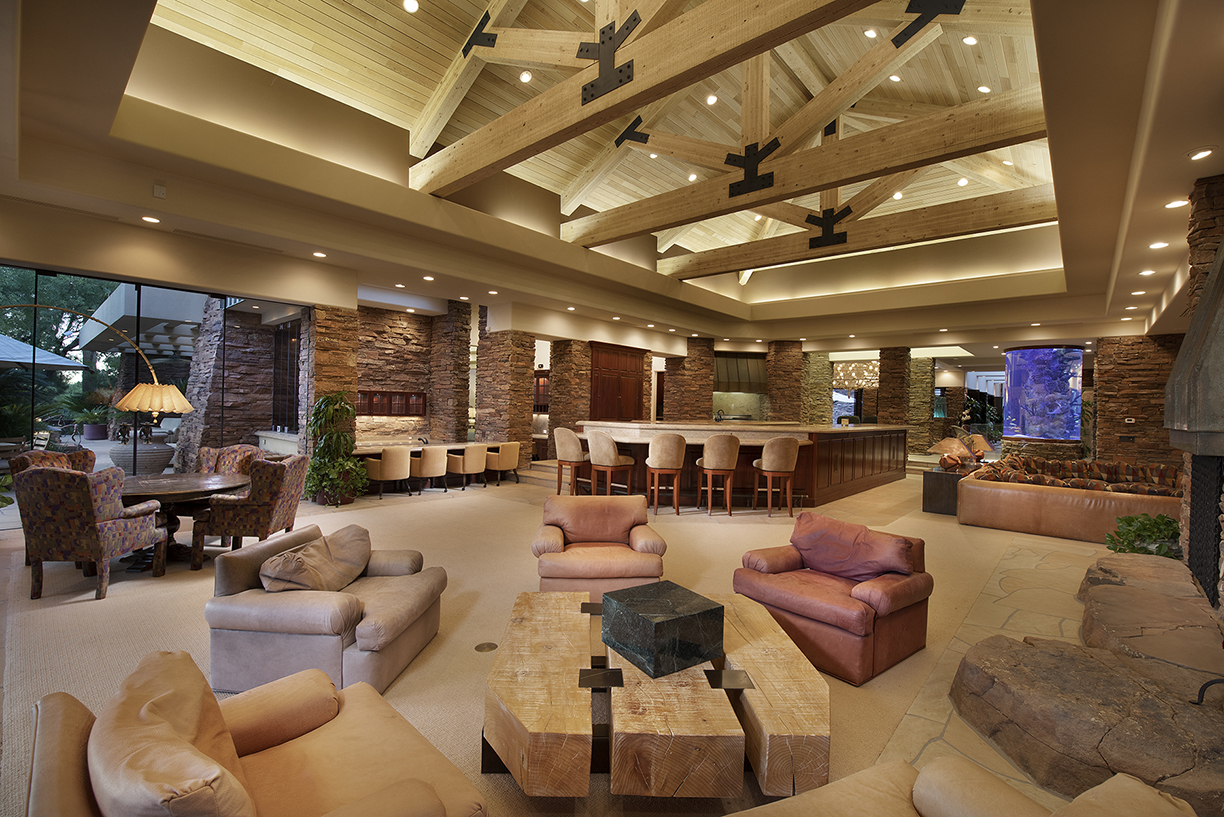

What You Need to Know
Navigating Today’s Luxury Market
You’re invited to an exclusive Unique Homes online event on Wednesday, Dec. 9 at 1 pm Eastern.
Our panel of experts will discuss the latest market dynamics for buyers and sellers as the world of real estate continually adjusts to a new norm.
We’ll talk about how common bidding wars are these days. Was there a COVID bump in sales? What has the pandemic done to the dynamics in your market? And much more!
To Join: Please register here. You will receive a confirmation email with the details to participate.
Join:
- Joyce Rey, executive director of Coldwell Banker Global Luxury in Beverly Hills, California
- Sula Pearlman, associate broker with Coldwell Banker Realty in Westchester County, New York
- Jeff Alexander, vice president with Compass in the Greater Boston area
- Linda Martin with Coldwell Banker Realty in Chicago
- Joanne Nemerovski, broker associate with Compass in Chicago
- William and Phyllis Taylor of Taylor & Taylor, an award-winning architecture and interior design firm based in Miami, Florida
- John Fair, managing director of The Strand, Turks and Caicos, a private residential community
Bette Ridgeway creates magic. She pours her heart and soul into the artwork that she creates. When the American abstract artist felt the rush of loneliness during the COVID-19 lockdown in her Santa Fe, New Mexico home, she turned that feeling into a work of art. With tones of grey, blue-grey, and white, Ridgeway let the paint (and gravity) speak for itself. She stepped back and knew that the name of the painting was Loneliness.
Ridgeway doesn’t use any paint brushes. Her canvases don’t sit atop an easel. Instead, she uses acrylic paint, a canvas, stools and plastic cups. The rest, she leaves to gravity.
“I call the technique ‘pouring’ and use the phrase, which I copyrighted, ‘layering light,’” Ridgeway explains.
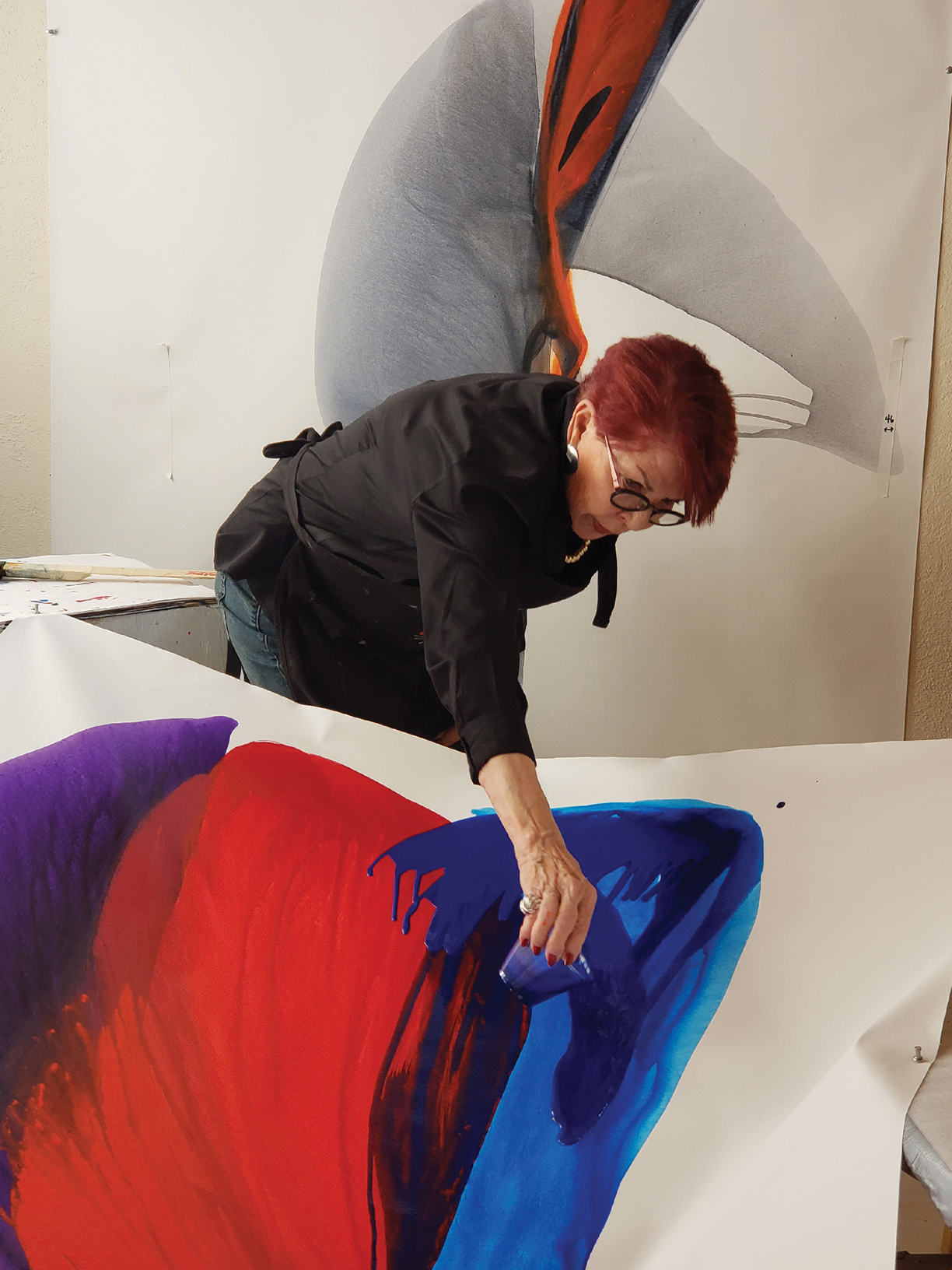
Bette Ridgeway

Lonliness
The artist accomplishes the “layering light” look by mixing her paints in her nine-inch plastic cups, where she then pours the colorful mixture on her canvas. Ridgeway explains that she manipulates the canvas by stretching it over stools and ladders, allowing the paint to create her signature style. “If you look at the work, you’ll see there’s motion in it and that’s achieved by the speed of the pour, the angle of the pour and that’s what makes it unique, no brush work,” says Ridgeway.
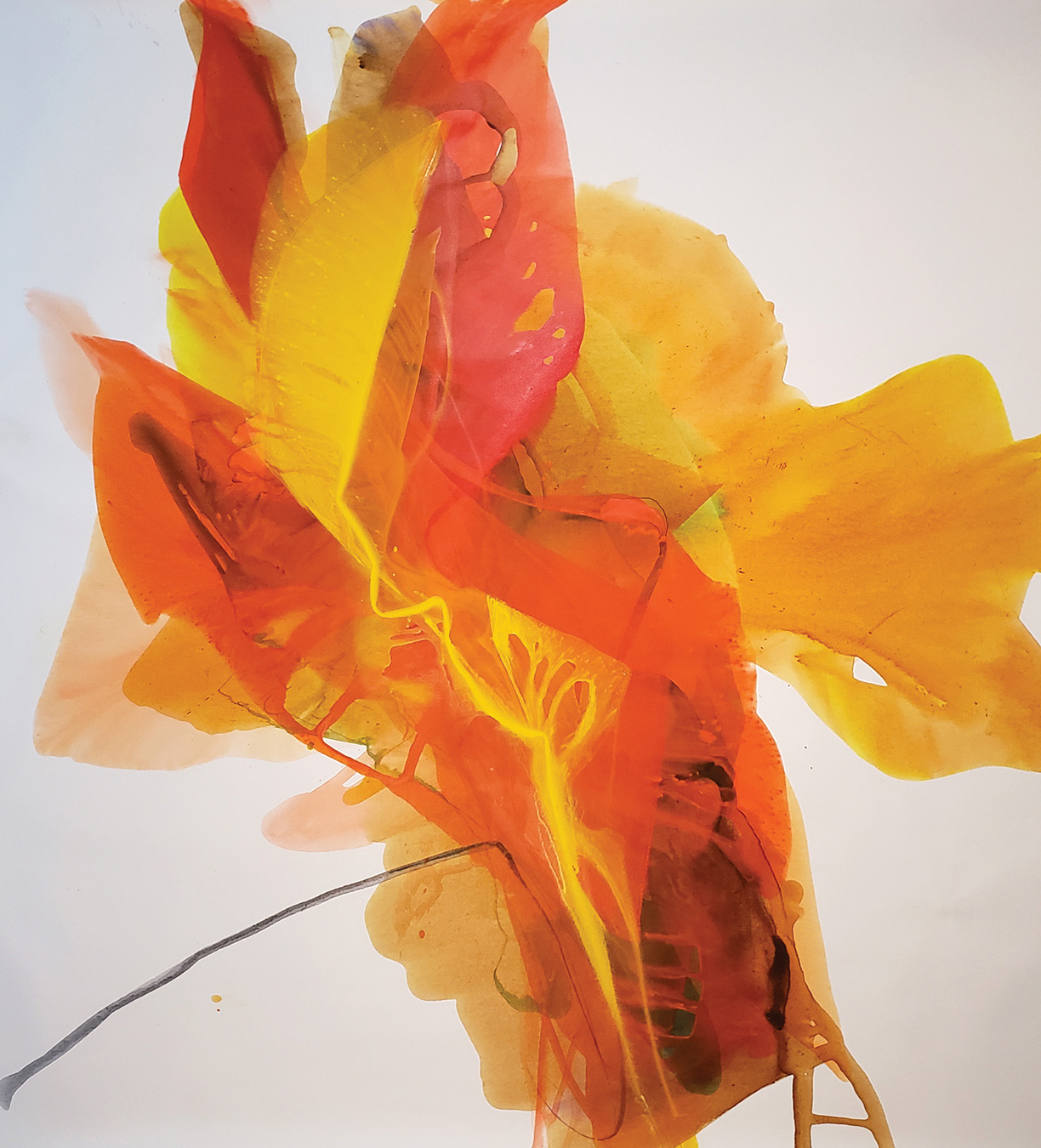
Fandango — Inspired by New Mexican flamenco dancer María Benítez. The twists and turns of the orange and red reminded Ridgeway of the dancer flowing and dancing the flamenco.
With over 30 years of experience as a commercial painter under her belt, Ridgeway has an endless portfolio of paintings, each with its own look. “Every single one of them is so different,” she explains. “Some are really bold and strong. Some are lighter and more transparent. Transparency is what makes the work different because when you pour a watered-down color over another watered-down color, you get a third color. You compose as you go.”
As an abstract artist, Ridgeway says, she pulls inspiration for her pieces from a memory, a feeling, or simply a color combination she envisioned or saw. “I don’t set out to paint something,” she says about when she approaches her canvas to paint. “I don’t set out to paint happiness or joy, or anything like that.”
Instead, Ridgeway takes what’s inside of her at the time and lets the colors and the pour shape the painting. This is one of the things that led Ridgeway to transition from figurative painting (painting an object or subject that is real) to abstract painting. “Abstract work is harder because it comes from inside you, you’re not looking at anything. You’re painting a thought, a feeling,” she says. “You’re painting a certain thing that’s come outside of you.”

Harvest Time — “When I started out, I wanted to use earth tones — amber and gold and a little bit of gray — more earthy than primary colors.” Ridgeway explains that when she threw the deep raspberry color and the white on the canvas, it reminded her of the rainforest. She squirted water in the center of the painting and let it drip. “A lot of people don’t know rainforests, but it’s like a soft, misty rain the whole time, so moist,” Ridgeway says. “Fruit everywhere, flowers everywhere, so you get that feeling of Mother Earth, just so abundant and rich and lifegiving.”
When a dear friend of Ridgeway’s passed away in 1999, the feeling that came out of her was sadness. To cope, she took this feeling and created a masterpiece. “I did this gigantic piece with only red and black, on a white canvas and I named it, Mi Corazón Roto, which means ‘my broken heart.’ And it looked like that, to me — an abstract broken heart.” It hung in her studio for a long time, until a best friend and collector of hers lost her husband. Ridgeway gifted the painting to her “and she hung it in her living room and it was like her broken heart,” she says. Ridgeway got the painting back after her friend passed away, saving it from being sold in a consignment shop. “So each piece kind of has a life of its own,” she says, going on to share that the piece recently found a new wall to call home.

Mi Corazón Roto
One of the best parts of what Ridgeway does is when people get to see her paintings. “The viewer is actually the one that completes [the painting] because they see what they see and it might not have anything to do with what I did,” she says. “It’s so much fun to hear what people see. It’s never what I see.”
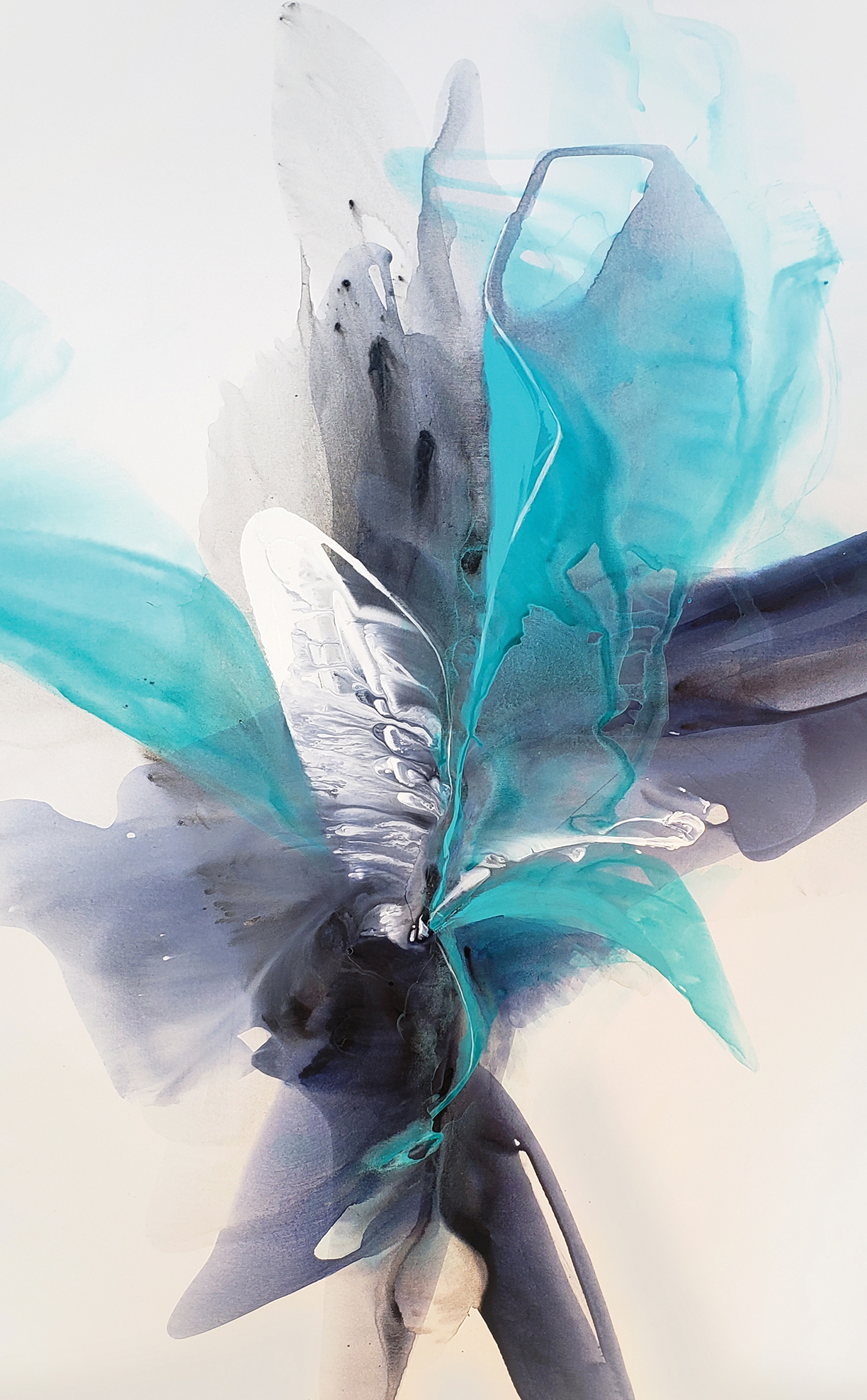
A Day in the Surf — “You know, with this COVID, we’re not able to travel, at least I’m not, and so I’m missing going to a beach this summer, I’m missing the water,” Ridgeway explains about this piece. Inspired by the water, Ridgeway created this piece that is reminiscent of the beautiful ebb and flow of the waves on a beach.
In a way, Ridgeway has come full circle in her career. In the mid 1970s, the artist visited a big gallery in New York to see the work of abstract artist Paul Jenkins, who used the same method of pouring in his work. “The paintings were enormous and they were in primary colors — red, blue, green, orange, yellow, a lot of black — and it just brought me to my knees,” Ridgeway says. “I had never seen anything like it and it was so powerful, and this entire gallery, with huge walls, was filled with this magnificent work, that I just stood there and cried. It was so beautiful.”
It is Jenkins, according to Ridgeway, that led her down the path to finding her creative voice. “I owe so much to my friend Paul who became a mentor over the years,” she says. “He passed away in 2012 and was a master, his work is in all the major museums in the world.”
Although Ridgeway has accomplished so much during her career and continues to show in galleries and paint commissions, she acknowledges she still has room for growth, “I’m learning every day. I don’t have all the answers,” she says. “And that’s the beauty of this work, it’s so different and every single day I learn something new. And that’s what’s exciting…. I’m just having the time of my life.”
For more information on Bette Ridgeway, upcoming showings, and paintings, go to RidgewayStudio.com or BetteRidgeway.com
Photos of artwork and Bette Ridgeway courtesy of Bette Ridgeway.
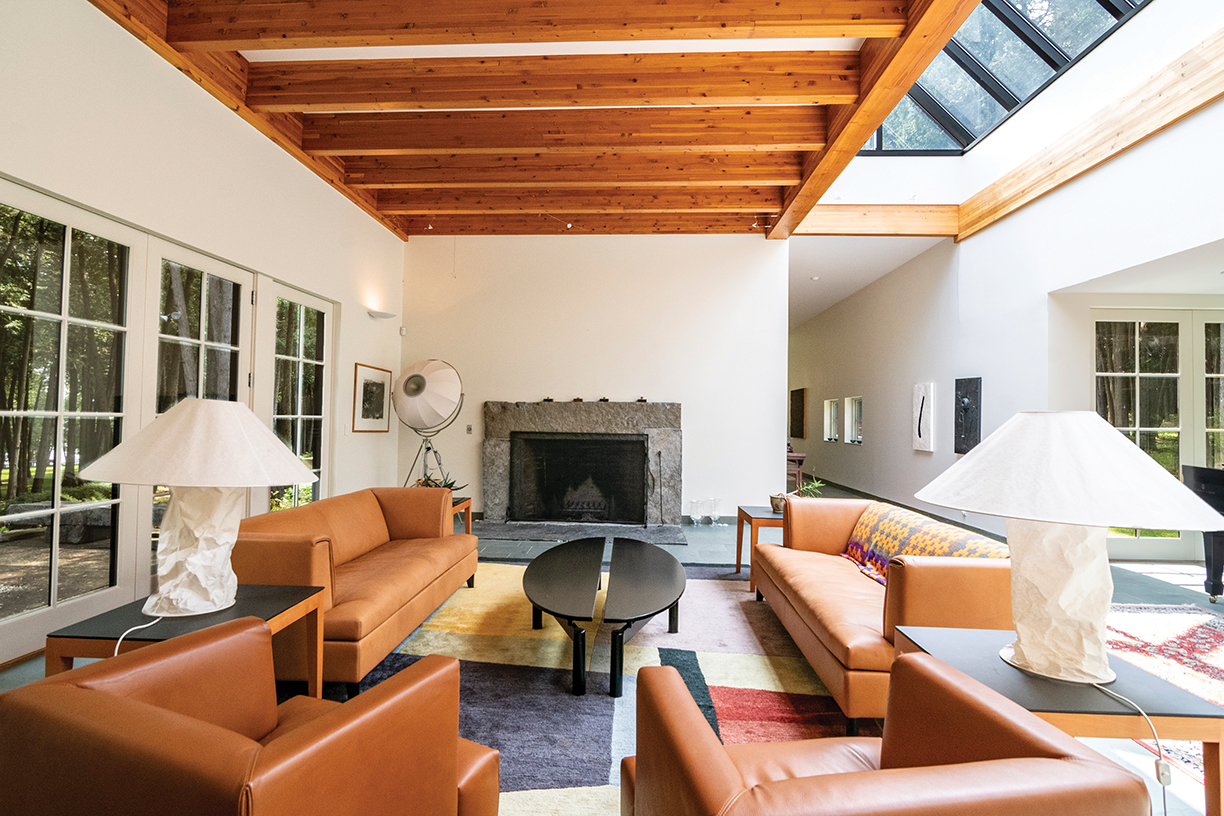
On one of the largest contiguous parcels in the NY Champlain Valley, this 431-acre farm and custom 8,000-square-foot waterfront home showcases mountain views on 646 feet on Lake Champlain. It offers the very finest custom details.
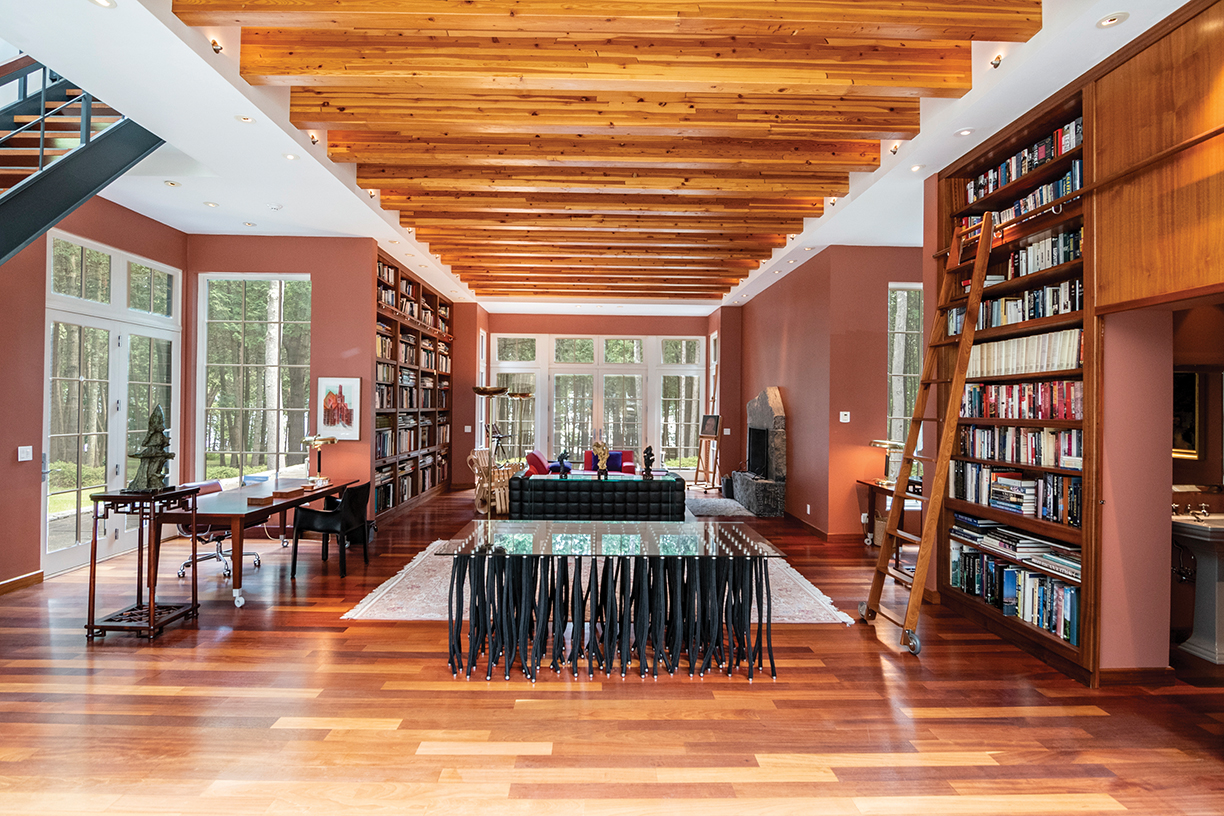
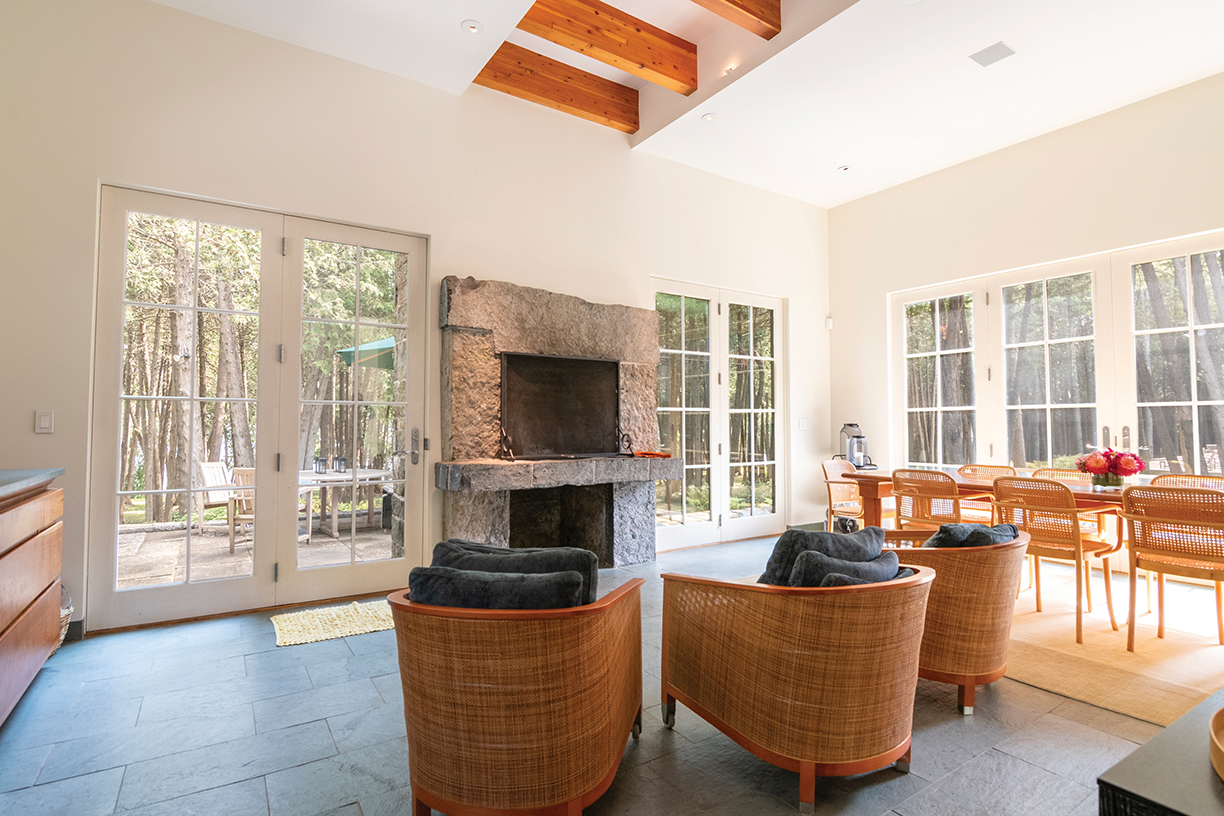
“From the library to the floor-to-ceiling windows, you feel as though you are outside in a gorgeous glass room looking through a filtered view of the manicured mature cedar trees at Lake Champlain and the Green Mountains,” says co-lister Jodi Gunther of Berkshire Hathaway HomeServices Adirondack Premier Properties, who is listing the property with Margie Philo. “In the media room and dining areas there are completely different views of Lake Champlain, but my favorite is the main suite with oversized windows that swing open for amazing Adirondack air and a higher vantage point.”
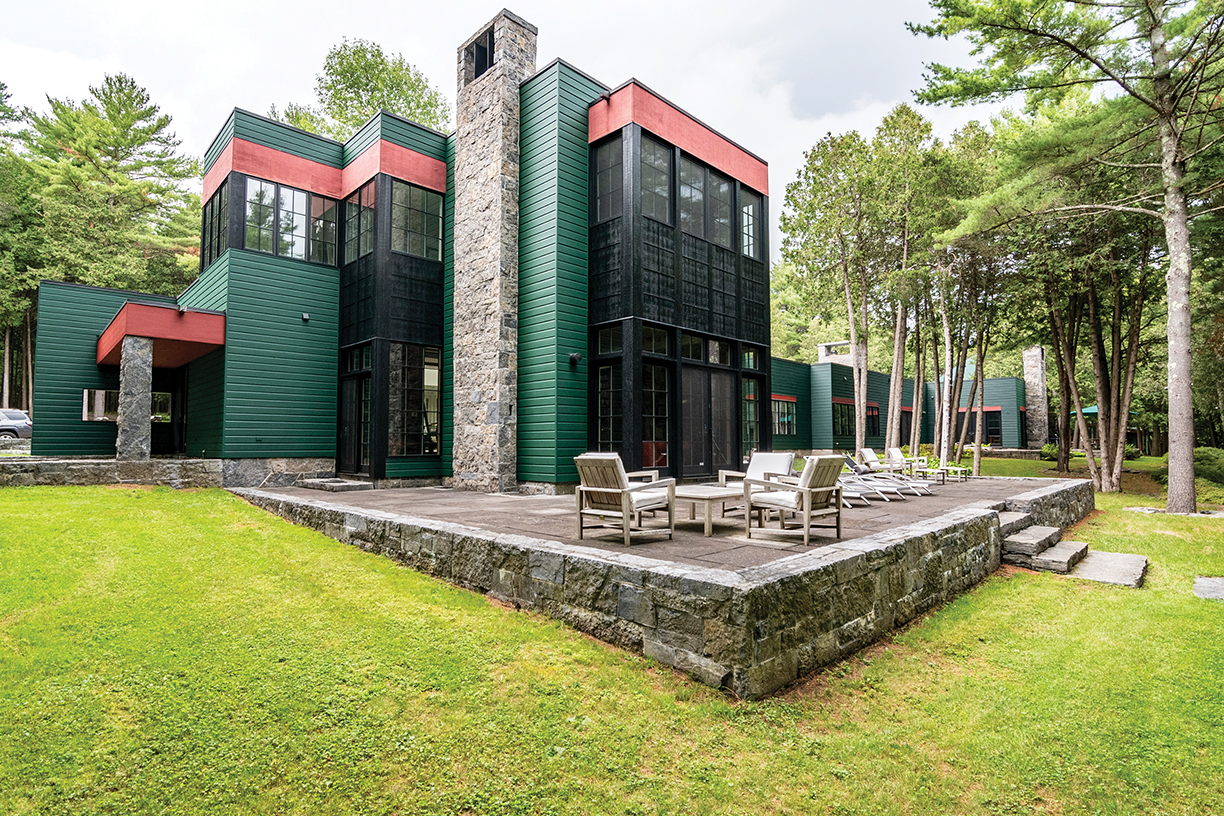
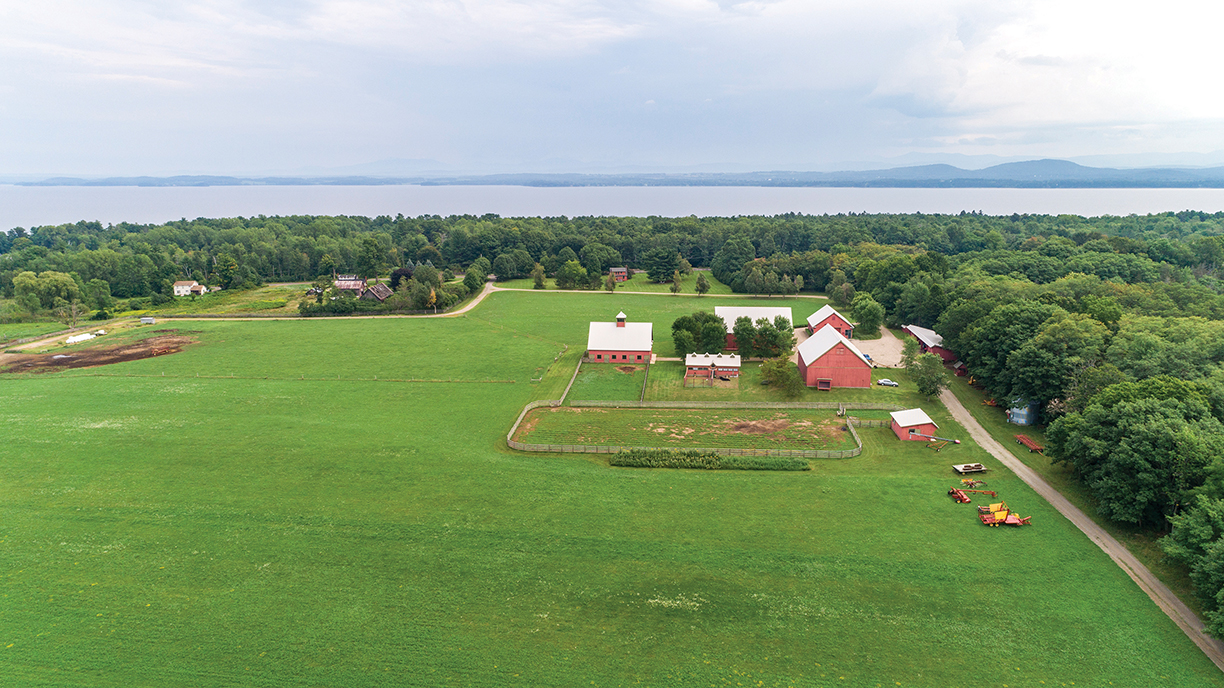

The property, listed for $9.5 million, boasts a totally renovated working 10-building farm, including a horse barn, hay barn, cow shed, a renovated year-round farm home, old slate gable roof barn and more.
It is even equipped with an underground water distribution system to the buildings, high speed internet, and a security system.
It is only minutes to the ferry to Vermont and includes a 2,000-foot grass runway for a serene and safe getaway.
To learn more about this proeprty, contact:
Margie Philo and Jodi Gunther
Berskire Hathaway HomeServices Adirondack Premier Properties & Adirondack Realty
O: 518.523.3333 C: 518.576.9840 Margie@adkpp.com www.adkpp.com
Some of the world’s finest hotels have accepted hundreds of thousands of new guests: honeybees that reflect a commitment to sustainability.
In an era when chefs and consumers are obsessed with conscientious sourcing and sustainability, restaurants are turning to local artisanal producers of cheeses, vegetables and meats. For a natural, sustainable sweetener that cannot get more local, luxury hotels around the world are converting rooftops into honeybee farms, a movement embraced by environmentalists and hotel guests alike.
Author Leslie Day, a naturalist who is passionate about her native New York, has spent a career documenting the city’s birds and trees. Her 2018 book Honeybee Hotel chronicles the rooftop garden and beekeeping operation at Midtown Manhattan’s Waldorf Astoria hotel. The book is a loving celebration of the iconic hotel, now undergoing a $2 billion renovation, and the natural world that doggedly prevails in the Big Apple.
Dr. Day — she holds a doctorate in science education from Columbia — was inspired by the Art Deco property’s conversion of its 20th floor rooftop into a bountiful garden and honeybee farm in 2012. The transformation not only enhanced the hotel’s culinary offerings, but brought together a community of humans to care for colonies totaling approximately 300,000 apis mellifera honeybees. Pleased to see other hotels emulating the Waldorf Astoria’s efforts, Day suggests, “This is a strong statement that a hotel cares about the environment and cares about the ingredients they serve their guests.”
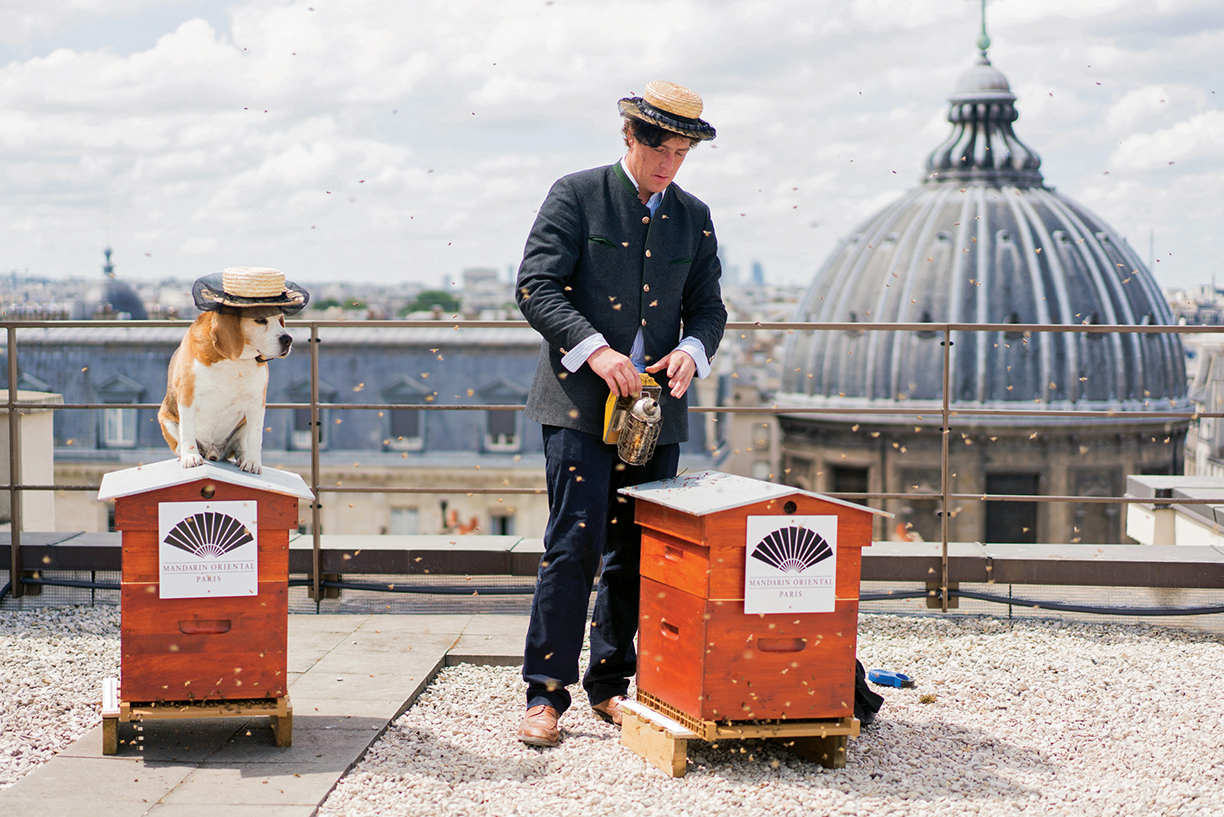
Mandarin Oriental Paris

Ojai Valley Inn
Day reports bees thrive in urban settings and notes even Manhattan is surprisingly hospitable to bees. “Before the chefs and staff put in the garden, the bees would fly to Central Park — about a beeline of a mile away from the Waldorf Astoria — to forage on flowering plants,” reports Day. “The city offers a veritable feast for pollinating animals,” she insists. A strong proponent of urban beekeeping, Day observes, “City beekeepers develop a relationship with these amazing little animals and help them stay healthy by monitoring the hive throughout the year.” She says of the challenging hobby, “It’s a relationship that brings you close to the natural world, even in an urban environment.”
David Garcelon, the chef Leslie Day features in Honeybee Hotel, arrived at the Waldorf Astoria after previously nurturing bees at the Fairmont Royal York in Toronto. His beekeeping at the Royal York, starting in 2008, was the genesis of a worldwide “Bee Sustainable” program adopted by more than 20 properties in the Fairmont Hotels & Resorts organization. Now hotel manager at Fairmont Banff Springs, Garcelon is attempting to overcome a restriction of introducing honeybees, a non-native species, into Canada’s Banff National Park.
“It’s not often you’re able to do something groundbreaking in a hotel over 100 years old,” recounts Garcelon of his bee program at the Waldorf Astoria. “There was a great deal of excitement when we added the hives, a lot of ‘buzz’ in the media as well,” he says. “However, the most rewarding aspect for me was seeing the look on guests’ faces when we told them we produced our own honey in Midtown Manhattan, then being able to take them to see the hives,” explains Garcelon, who appreciates any ingredient that has a story to tell.
Thanks in part to Fairmont’s aggressive program, the practice of hotels caring for honeybees is not confined to North America. In London, 350,000 bees reside on a third-floor garden at St. Ermin’s Hotel and in Paris, the very chic Mandarin Oriental — it is located on the fashion-forward Rue Saint-Honoré in the 1st arrondissement — has been honeybee-friendly since 2012. The honey produced by those Parisian bees is used in the hotel’s various restaurants and bars, including the Michelin two-starred Sur Mesure under the direction of chef Thierry Marx.
The Mandarin Oriental’s legendary beekeeper, Audric de Campeau (pictured with his companion on the rooftop of the hotel on page 26), has also introduced beehives to iconic Parisian monuments like Les Invalides and Musée d’Orsay. “Bees are an important part of the pollination cycle and often thrive in urban environments such as Paris, which has been a pesticide-free zone for the past ten years,” explains Mandarin Oriental’s general manager Philippe Leboeuf. To help restore the decreasing honeybee population and to contribute to biodiversity, the hotel maintains two rooftop hives hosting 100,000 Buckfast honeybees, a breed that adapts well to city life.
“Due to the specificity and the diversity of Parisian flowers, the Mandarin Oriental honey has a unique flavor, rich and complex,” reports de Campeau, describing it like a master sommelier. “It has a powerful and persistent scent of red fruits, and tastes wonderfully round in the mouth, with a bright, fresh finish,” he assesses. In addition to chef Marx and pastry chef Adrien Bozzolo, bartenders use the house honey in a cocktail of Champagne, yuzu liqueur and jasmine tea.
Most people outside the state are unaware of it, but Utah is known as the “Beehive State,” and the Waldorf Astoria Park City continues the practices of its flagship property in New York. Master beekeeper Debrah Carroll, who also serves as kitchen manager at the hotel’s Powder restaurant, maintains approximately 60,000 honeybees adjoining the onsite herb garden. Looking to become more sustainable in its food practices, the Waldorf Astoria initiated the program in 2014, complementing its emphasis on utilizing local ingredients. “The local sourcing is plentiful in our mountains, but we also wanted to have something, literally, from our own backyard,” explains Carroll, who concedes Utah’s dry climate presents challenges for beekeeping.
Carroll reports guests respond well to the uber-local honey, particularly when presented in the honeycomb. “The Waldorf Astoria honey has a wonderful wildflower flavor that works in various dishes and cocktails,” says the master beekeeper, citing seasonal fruit plates, salad dressings, candied pecans, and cheese or charcuterie boards, as well as a signature cocktail called the Astoria Tonic. VIP guests are treated to tours of the hives and garden, dressed in protective gear.
Dedicated to educating people on the virtues of beekeeping, Carroll reveals some extraordinary facts about honeybees that engender a greater appreciation for the house-made honey hotel guests drizzle into their tea. For instance, it takes 12 honeybees an entire lifetime (which is typically six to seven weeks) to generate a single teaspoon of honey, and in order to create a pound of honey, a hive of bees must travel 55,000 miles.
One might not expect 4,200 acres in the foothills of the Great Smoky Mountains to be a magnet for sophisticated epicureans, but Tennessee’s Blackberry Farm most certainly is. Almost everything that arrives on the dining table is produced on the premises, and that includes honey overseen by farmstead manager and beekeeper Dustin Busby, whose resume includes celebrated restaurants The Fat Duck and The French Laundry. He manages at least seven hives of European honeybees with access to tulip poplar, wildflowers and sourwood.
Most prized is the honey from sourwood tree blossoms, known for its sweet and spicy qualities, a hint of anise and agreeable aftertaste. Busby explains that factors such as time of harvest, weather conditions and even the specific portion of the hive from which the honey is extracted can influence taste. He is constantly developing new recipes for using the honey in the resort’s preserve kitchen and recently created a blueberry-elderflower jam using the house-made honey in place of sugar.
“Seeing the hives and talking about our bees are part of our garden and farmstead tours,” reports Busby. He adds, “More involved tours of the bees, including suiting up and looking at the hives or even collecting honey, are conducted from time to time on special request from guests.” Blackberry Farm honey is one of the many artisanal food products sold directly to hotel guests.
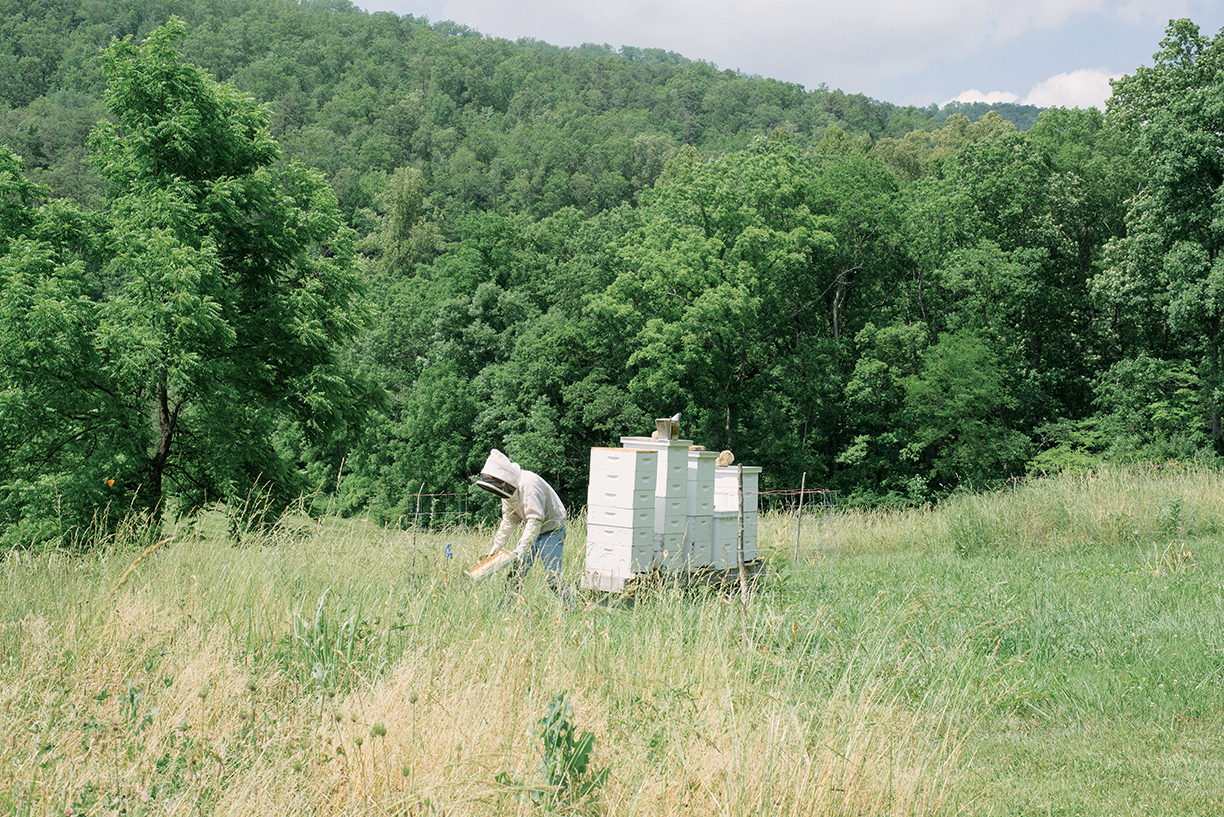
Blackberry Farm raises virtually everything served at the resort, including house-made honey.
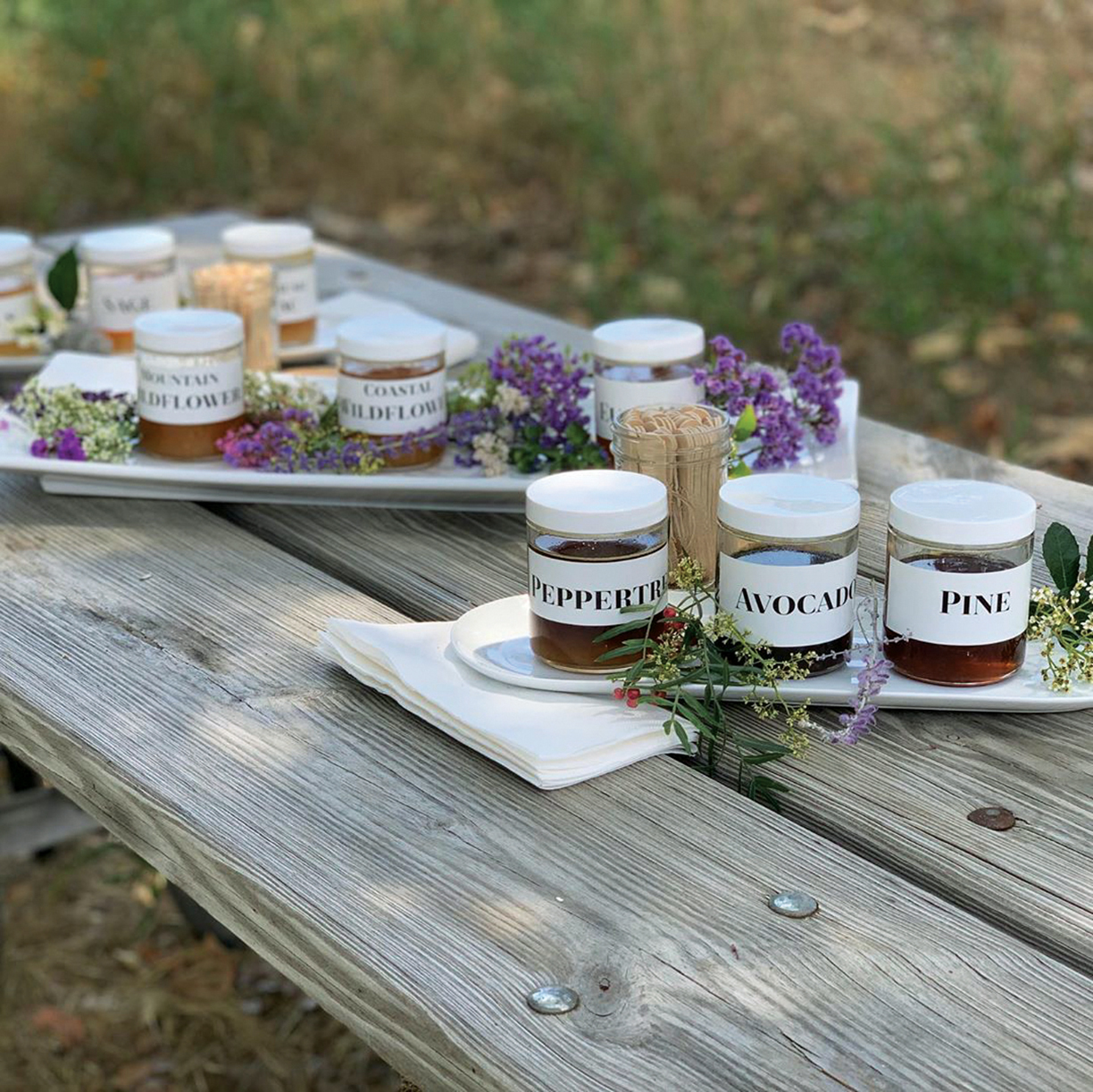
Honey produced at Ojai Valley Inn reflects the flavors of lavender, avocado, and citrus.
The Ojai Valley Inn is just 80 miles from downtown Los Angeles, but feels like another world. From its 220 acres in an idyllic coastal valley, guests enjoy access to the ocean and vineyards, as well as championship golf on site. The Farmhouse — this is a culinary event center directed by acclaimed chef Nancy Silverton — reflects the Inn’s commitment to food and wine. Guests who tour the retreat’s apiary in protective suits enjoy tastings of different honeys whose flavor profiles result from pollination of local plants like avocado, lavender and citrus.
“We’re extremely proud of our beekeeping program at Ojai Valley Inn, not only because it provides us with an amazing estate-curated product that we can offer our guests, but also because we believe strongly in good stewardship of the natural resources of the Ojai Valley,” reports executive chef Truman Jones. Emphasizing the positive ecological impacts yielded through the care of those prolific pollinators, he adds, “It gives us a huge return on our efforts by propagating the flowers and various fruits of the Inn and the entire Valley.”
In San Francisco, nearly a dozen hotels maintain rooftop beehives, including the Clift Royal Sonesta, which uses honey from its “Bee Sanctuary” in craft cocktails at its legendary Redwood Room. The Broadmoor in Colorado Springs, ranked among the world’s finest resorts, has also developed a strong apiculture program and Philadelphia’s Sofitel at Rittenhouse Square accommodates 480,000 honeybees on its rooftop garden, showcased in dishes at the hotel’s Liberté Lounge.
The beekeeping operations at these luxury hotels are an offshoot of an urban beekeeping movement that has become trendy in the last 20 years. The tasting notes of backyard honeys, sometimes sold at farmers markets and gourmet shops, mirror the flora of an area, even a specific neighborhood, much like a wine reflects its vineyard’s own terroir.
In addition to mesmerizing guests, keeping bees at hotels helps alleviate a crisis-level decline in the honeybee population that threatens entire ecosystems and adversely impacts food production for a hungry world. Master beekeeper Debrah Carroll reports that 80 percent of all flowering plants must be pollinated to survive, and that more than a third of the world’s food supply is dependent on pollination by insects like honeybees.
Addressing her nostalgic Waldorf Astoria, scheduled to reopen in 2022, naturalist Leslie Day comments, “I’m very hopeful the new management will read my book and bring the bees back.”
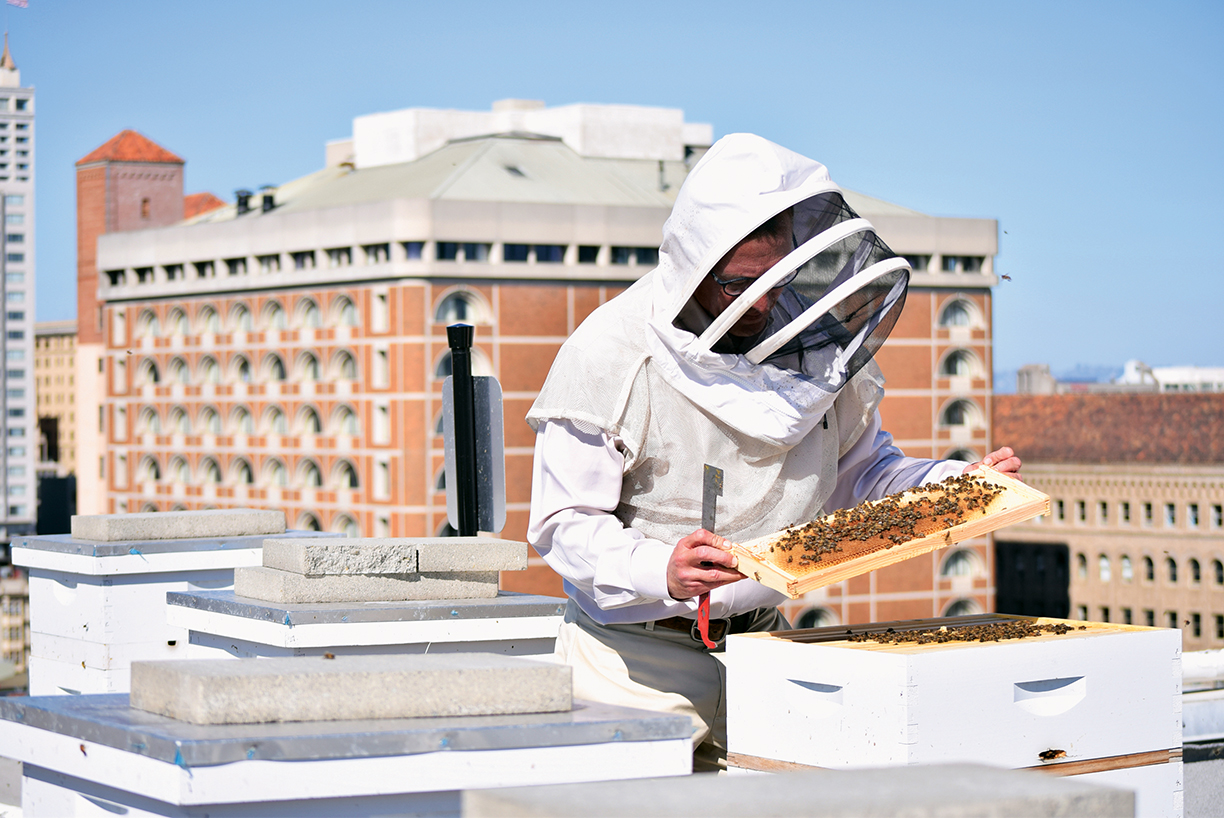
Honey from the rooftop of the Clift Royal Sonesta is incorporated into cocktails at the historic Redwood Room.











